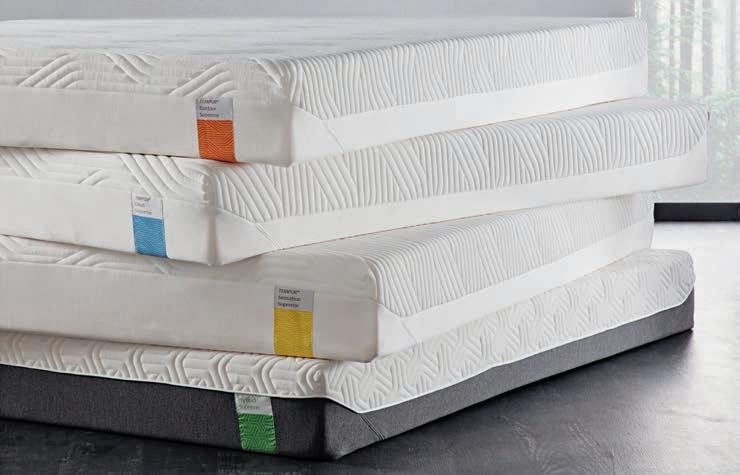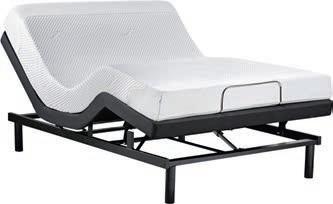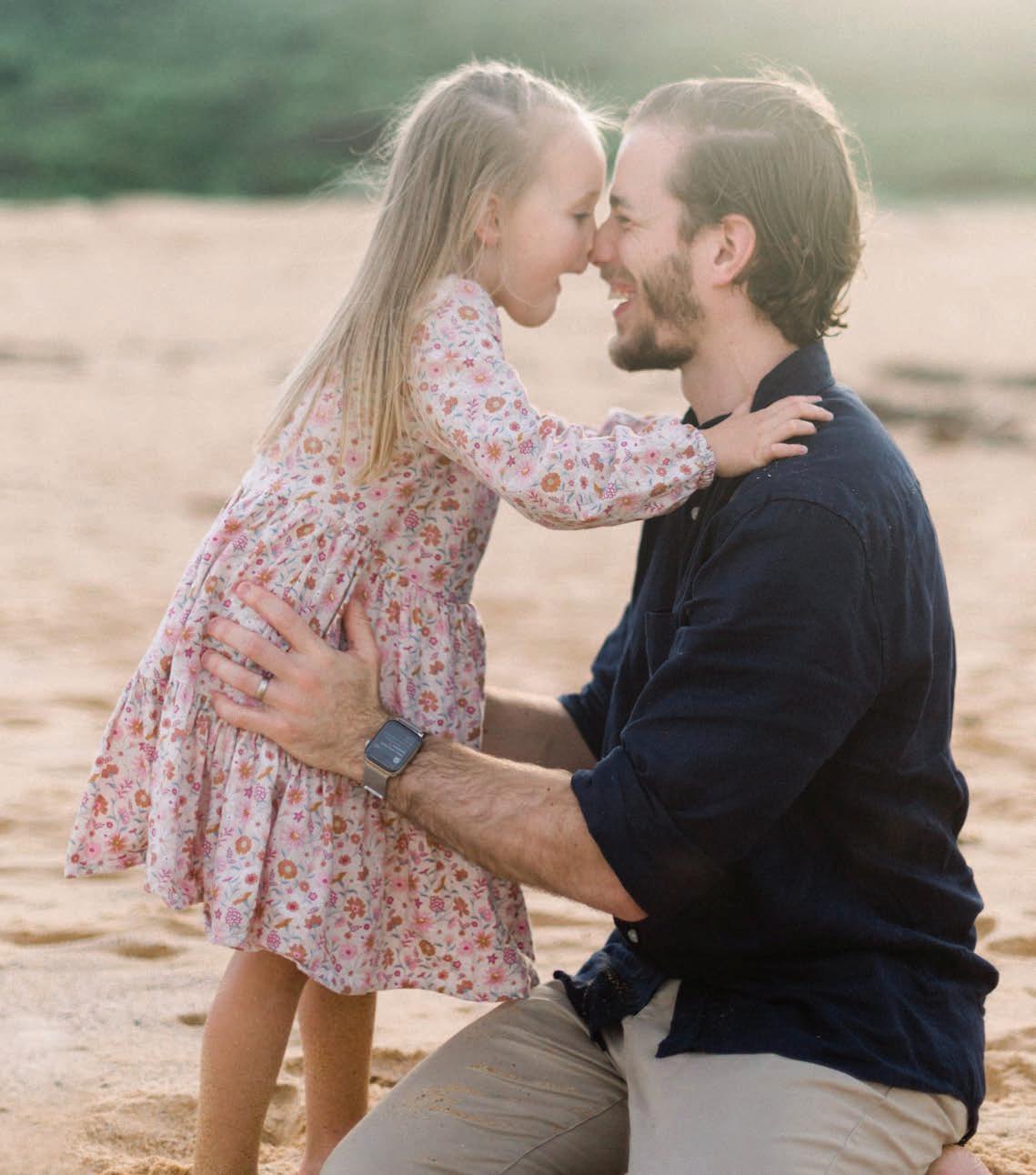
WELLBEING PARENTING LIFESTYLE INSPIRATION CENTRAL COAST’S FAVOURITE FAMILY MAGAZINE FOR OVER 20 YEARS coffee WITH A RADIO ANNOUNCER/AUTHOR MAZ COMPTON style identity families YOURS FREE [#125] AUG/SEPT 2023 on the coast Picking your parenting battles AND WHEN TO IGNORE Discover your no matter how you identify Coastie
TUES 26 SEPT - MON 2 OCT 2023
TUES 26 SEPT - MON 2 OCT 2023









COASTIE CARNIE FAIR DAY LIVE MUSIC EXHIBITION MARKETS
COASTIE CARNIE FAIR DAY LIVE MUSIC EXHIBITION MARKETS
WORLD FOOD POOCH PARADE CABARET PERFORMANCE
WORLD FOOD POOCH PARADE CABARET PERFORMANCE
FILM DJ'S YOUTH EVENTS
FILM DJ'S YOUTH EVENTS
DRAG BINGO DANCE PARTY COASTALTWIST.ORG.AU
DRAG BINGO DANCE PARTY

INCLUSIO N MEANS YOU! INCLUSIO N MEANS YOU! PRINCIPAL PARTNER PRESENTED BY CREATIVE PARTNER MEDIA PARTNERS GOLD PARTNERS SILVER PARTNERS MAJOR PARTNERS PRESENTING PARTNERS 7 DAYS OF FESTIVAL FUN! CENTRAL COAST, NSW 7 DAYS OF FESTIVAL FUN! CENTRAL COAST, NSW
COASTALTWIST.ORG.AU WOY WOY GOSFORD WOY WOY GOSFORD UMINA ETTALONG UMINA ETTALONG
Welcome
We are so excited to share with you the incredible journey we’ve recently experienced by welcoming our third child into the world. The whole process has been nothing short of a magical adventure, and we couldn’t wait to share.
The news of expecting another addition to our family filled our hearts with joy and brought a unique sense of fulfillment, knowing it would be the final addition to our family. We were eagerly anticipating the arrival, and the thought of watching our older children embrace their new sibling warmed our soul.
One of the most precious decisions we made during this journey was to keep our baby’s gender a surprise until birth. As we had found out the gender for our first two, we felt in a world full of instant gratification and readily available information, that we wanted to embrace the wonder of the unknown.
As the due date approached, the atmosphere at home was indescribable. Our older children were bursting with excitement, eagerly discussing what it would be like to have a new brother or sister. Witnessing their unconditional love and curiosity was amazing and heart warming.
When the moment finally arrived, and we held our new baby girl in our arms, tears of joy streamed down our faces. In that instant, we experienced the boundless love and wonder that comes with the birth of a child. It was a reminder that life’s most extraordinary moments are often the ones filled with mystery and surprise.
Now, as a complete family of five, the love and joy that fills our home is beyond measure. Our children have embraced their roles as a big brother and sister with such tenderness, and watching them shower love on their baby sister is a sight that melts our hearts.
As we look back over the past nine months, we are reminded once again of the miracle of bringing a new life into the world. It is a magical experience that transforms you, fills you with awe, and makes you treasure every precious moment. Cherish your loved ones, Coasties xx
Tanzie&Luke
Art Director/Editor
Tanzie Carpenter tanzie@onthecoastpublications.com.au
Production
Luke Carpenter luke@onthecoastpublications.com.au
Publisher
Tanzie Carpenter / 0414 611 851
Luke Carpenter / 0405 449 339
trading as On the Coast Publications ABN 52 212 212 482 PO Box 3251, Bateau Bay NSW 2261
For advertising enquiries advertising@onthecoastpublications.com.au
For article contribution enquiries tanzie@onthecoastpublications.com.au
Printing Spotpress Pty Ltd / 02 9549 1111
Cover image
The Natural Photography Co thenaturalphotographyco.com.au @thenatural_photographyco
Imagery
ingimage.com and freepik.com
Contributors
Dr Nicholas Altuneg, Dr Georgia Page, Dr Baz Ghafourian, Georgia Spencer, Carin Clegg, Sam and Jordi Woods, Dr Carly Walker–Smith, Laura Hurstfield, Alexandra Wilson, Amy Stitt, Zoe Papadatos, Louise Hurley onthecoastpublications.com.au
4 Coffee with a Coastie –Maz Compton
Warranty & Indemnity
Advertisers and/or advertising agencies upon and by lodging material with the Publisher for publication or authorising or approving of the publication of any material INDEMNIFY the Publisher, its servants and agents against all liability claims or proceedings whatsoever arising from the publication and without limiting the generality of the fore–going to indemnify each of them in relation to defamation, slander of title, breach of copyright, infringement of trademarks or names of publication titles, unfair competition or trade practices, royalties or violation of rights or privacy AND WARRANT that the material compiles with all relevant laws and regulations and that its publication will not give rise to any rights against or liabilities in the Publisher, its servants or agents and in particular that nothing therein is capable of being misleading or deceptive or otherwise in breach of Part V of the Trade Practices Act 1974. The views expressed in On the Coast –Families are not necessarily those of the editor or publishing staff. While every effort has been made to insure accuracy of the information in this publication, no responsibility will be accepted by On the Coast – Families. No part of this publication may be reproduced without permission of the publisher.
8 Paw–fect pals
12
The p ower of knowing your child’s learning style
16 A focus on men’s health
18 Nutrition and eye health –fact or fiction
19 Tying the De facto knot: are you in a de facto relationship?
22 D iscover your style identity, no matter how you identify
23 Forest bathing and ecotherapy: nature can heal
24 Picking your parenting battles and when to ignore
26 Why we feel bad
27 Identify, remove and prevent mould
28 Perimenopause as a rite of passage: embracing change and empowering women
30 The p ower within – why and how women of all ages should prioritise pelvic floor exercises
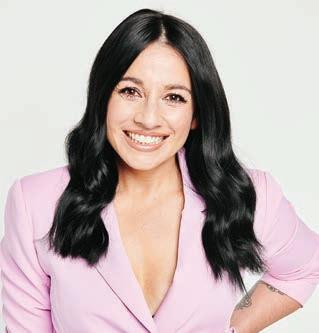
AUG/SEPT 2023 – ISSUE 125 3 Inside
Check out past articles at onthecoastfamilies.com.au
@onthecoastfamilies proudly supported by
coffee Coastie WITH A
Welcome to Coffee with a Coastie. I was excited to have Maz Compton join me to discuss life, sobriety, her podcast ‘Last Drinks’ and her latest book of the same name ‘Last Drinks’. Maz’s journey has been a captivating one, spanning from MTV host to becoming a gym owner and a prominent breakfast radio host. So, it was an honour and a pleasure that I got to sit down and chat with Maz.
Before we jump into talking about your book and sobriety, can we get to know a little about Maz? You were born in England and came to Australia with your family when you were 8 as your dad was going to join a ministry, though didn’t. You then ended up growing up on the Northern Beaches. So I wondered, what was Maz’s life like growing up?
You’ve nailed it. That’s exactly what happened. Born in the UK and when I was 8, my dad came to study at a bible college in Sydney, so relocated the family for 12 months. Then I think my parents just fell in love with the sunshine. Unfortunately, a series of events meant that my dad didn’t end up going into the ministry, but the undertone of religion was a huge part of my upbringing.
I was a very confident child and hung out with the nerdier group at school. I was the president of the Environment Club and always found myself in leadership roles. I was really comfortable

leading and I acted a lot in high school too. I was also really good at public speaking and would say it was one of my strong suits. That was one of my strong suits. I was the Lions Youth of the Year at one point. Being an extrovert, I was probably a little obnoxious thinking about it now, but that was me. I felt like I was that kid that ended up being friends with everyone at graduation.
In your latest book ‘Last Drinks’, you mention that in your MTV hosting days, even though things were going great you were waking up each day with compounded feelings of anxiety, feeling over managed, under–valued, insecure, and having imposter syndrome. Can you talk about this time in a way that would help someone else battling the same thoughts?
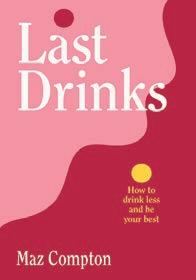
Yeah, so I think one thing to note is that I believe everyone has imposter syndrome. Where at some point in life, everyone may feel inadequate for what is on their plate. At this point I would encourage you to manifest a dream that you really do want but know that it might not feel how you think it’s going to feel if you get it. Also learn the tools that will help you cope with those moments. Do a bit of work on you, whether it’s through therapy or counselling, I don’t know, but do some work on you and learn some strategies to sit with big feelings in uncomfortable moments, as I think this will help.
You mention in your book that you dabbled with sober curiosity for a year before stopping drinking on new year’s eve of 2014. What does dabbling in sober curiosity look like?
Sober curiosity is just about questioning your relationship with alcohol. If you feel uncomfortable about how much you’re drinking, if you lie about how much you drink, if you drink by yourself or if you just think about alcohol a lot. I remember at lunchtime at work being like, I can’t wait until 6:00pm so that I can have a drink. You know, those sort of invisible boundaries and red flags around alcohol are worth questioning and that to me is the definition of sober curiosity, just asking yourself questions around your drinking behaviour.
You’ve said you didn’t plan on never drinking again originally. How long was it before you started saying I’m never drinking again?
Probably five years in, maybe six. So only a couple of years ago I started saying it out loud. For me, it was better not to do the never ever in the first few years. It was much better to say to others and to myself, I’m just not drinking right now and it’s really working for me.
The first episode of your ‘Last Drinks’ podcast was on 28th June 2022, and you are now 67 episodes in, at last count. When you first started the podcast did you have any idea just how many people were prepared to share their story? Not really. I didn’t really think about it as a long–term thing. I just had a bubbling inkling for a while that I wanted to do a podcast and then I just started doing it. I did it because I love having conversations about sobriety. I love hearing other people’s journeys and I love the long form conversation of a podcast, because you get to go a little bit deeper with people.
4 ON THE COAST – FAMILIES
MAZ COMPTON Radio Announcer/Author
The fact that people listen, having had over 55,000 downloads, blows my mind. It’s overwhelming how impactful it’s been.
What is the biggest lesson you have learnt through hearing people share their stories on your podcast?

I guess it’s just affirmed to me that everyone’s sobriety is their own story. Because I’ve not had an identical conversation on the podcast, and I have chatted to well over 70 people now. Everyone’s journey is their own, they wrestle with it and they get through it in their own unique way. And so, I love that because it means it’s available for everyone.
Now you have written a book of the same title ‘Last Drinks’. The book covers everything from yours, to other people’s personal stories, science on how alcohol affects us both physically and mentally, a sober toolkit, along with a 30 day alcohol free journey, that the reader can go on. How did you decide on the structure of the book and the way it is written?
The principle of great storytelling is just to have a beginning, a middle and an end. It’s how I go into every single radio break that I do on air. You have a beginning, you have a middle, and usually a zinger at the end. And so, I just applied the same logic of storytelling in the book. The beginning is alcohol, what alcohol is, why alcohol is the problem, what alcohol does and how it affects us. I talked to a neuroscientist about how it affects our brain chemistry. I talked to a GP about how it affects our body functions and a sleep expert about how it impacts our sleep. The middle bit is sobriety and what that can do for you and what that looks like on other people. Along with curating a sober toolkit to
safeguard your sobriety by having a bit of a game plan. Then the final bit, is a practical handbook where I can hold your hand through your first 30 days as your sober buddy, as I really wanted to support and equip people. This is why the third part is so important.
What were your early months of sobriety like? And if we were to look at the things mentioned in the sobriety toolkit within your book, like journaling, bedtime routines and breathwork, what did you find most helpful?
Journaling is probably the biggest. The first 30 days of January 2015, I journaled every day. Sometimes I wrote about what I was thankful for. Sometimes I wrote about what I was upset about. Sometimes I didn’t know what to write about, so I wrote about not knowing what to write about, but I did write a daily journal every day. Then a few months after that I went back and read what I journaled and it was very insightful. What I discovered about myself was the lack of self–compassion and self–worth that I had. So, then I was able to go on a journey and implement some things in my life that would sort of, you know, prop me up in the self–esteem department. Everything’s in the toolkit that I did at
some point to either fill in time or that I leant on to explore something new.
Really, if I’m going to be completely honest, I spent so much time drinking that when I stopped drinking, I had loads and loads of time on my hands and it was very overwhelming at first. So, I was like, well, I just need to do stuff and that’s really I think what the first 30 days is about, just surviving. Then from there, you can start to do some self–work.
I would like to finish on a line that is mentioned in Maz Compton’s book ‘Last Drinks’ for anyone that does choose to go on a journey of sobriety. The line is, if you do slip up, please be kind to yourself.
I’d like to thank Maz for all that she is doing to help others on the journey. If anyone would like to find out more about Maz, her podcast or her new book Last Drinks, please go to mazcompton.com

This interview had to be edited for readability and length. So be sure to scan the QR code or go to coffeewithacoastie.com.au to hear the full conversation where we talk to Maz about:
• Working through deep grief in
Inspirational and laser focused!
Luke with Maz Compton
• Her first drink at 15
• Dealing with feelings of lack whilst working at MTV

• Maz’s journey of googling ‘Am I an a lcoholic’
• The impact her ‘Last Drinks’ podcast is having
• Her latest book ‘Last Drinks’ in more depth and much more…
AUG/SEPT 2023 – ISSUE 125 5
“
Everyone’s journey is their own, they wrestle with it in their own unique way, and they get through it in their own unique way. And so, I love that because it means it’s available for everyone
This interview had to be edited for readability and length.
@lastdrinkspod MazCompton
7 DAYS OF festival fun
Coastal
Twist LGBTIQ Arts & Culture Festival exploded onto the Central Coast scene in 2019 as a locally made, vibrant and original festival which was unique to the Coast and fun for all.
Prior to 2019 the Central Coast was the only region in Australia in the top 15 largest (we are number 9) with zero national celebratory symbols for our large and local LGBTIQ population, our friends, families, neighbours and businesses, leaders, organisations and innovators all wanting to push for a more equitable local region tackling the broader negative perceptions of the region. With 800 expected and over 7,000 showing up, the festival has continued to grow from strength to strength, last year hosting over 9,500 people and completely sold out across 7 days and 15 events.
This September 26 – October 2 welcomes the festival back for its third incarnation in what has become the Coast’s glitteriest week of the year with 7 days of jam–packed surprises, playful and profound fun and learnings with LGBTIQ Arts & Culture from across our region, our state and our country as Artists, Thinkers and Innovators all come together to present work that simultaneously entertains and expands our worlds, our understanding
of resilient communities and our possibilities as a region as one which is equitable, welcoming and original, cooking up our own brand of Quirky, Coastie, Kitsch.
Multiple Central Coast hubs will come alive with free and ticketed events to suit all ages and abilities across Woy Woy, Ettalong Beach, Gosford and Umina Beach with cabaret, live music,

film, dance parties, youth and senior activations, art exhibition, workshops, wellbeing hub and even bingo. The shining jewel of the Festival, the Coastie Carnie Fair Day on Sunday 1 October will be featuring headliner live music and performance artists alongside locals with all day entertainment, the biggest market footprint on the coast with makers, local businesses, organisations, food and beverage, peaking with the now iconic Puparazzi Pooch Parade across the free outdoor event.
The 2023 year’s Festival theme
“Inclusion means you” is a call for everyone across the Coast and beyond to join us in nurturing a culture of respect for a happier, healthier, and more welcoming Central Coast.”
Festival Director Glitta Supernova states. “In times as polarising as these, Inclusion Means You encapsulates the ethos that everyone deserves to be heard, valued, and welcomed with respect.”
Full schedule of events as well as RSVP for free events and ticket purchases, giveaways, prizes, raffles, and opportunities www.coastaltwist.org.au
This festival is for everyone and every family structure, so families and young people are also covered with over 55% of the programming all ages and 65% of events free hosting youth activations by the National award–winning Central Coast Youth Arts Program, YAAS! Young Authentic and Social from art exhibition, youth variety show to a dance party.
There are activities and entertainment for everyone, regardless of how you identify and this festival is about promoting and celebrating the beauty of diversity across the natural world.
6 ON THE COAST – FAMILIES
COASTAL TWIST
Tying the De Facto–Knot:
ARE YOU IN A DE FACTO
RELATIONSHIP?
In a world where societal norms are undergoing a rapid transformation, the institution of marriage finds itself at the centre of a captivating and dynamic narrative. Relationships are now forging new paths, venturing into uncharted territories that defy convention and challenge our perception of traditional unions.
Enter the increasingly popular de facto relationship, which, under Australian family law, bears striking resemblance to its matrimonial counterpart. Georgia Spencer, Solicitor at Orbell Family Lawyers (located in Erina) provides an overview on how family law recognises de facto relationships, and how to know if you are in one. Australian family law encompasses both marriage and de facto relationships, revealing their similarities and shared legal framework. Did you know, these two forms of commitment operate under the same laws and are dealt with by the same Court?
Decoding Marriage v De Facto: Legal Distinctions
On the one hand, marriage involves a formal contract, and is defined as ‘the union between two people to the exclusion of all others, voluntarily entered into for life’ On the other hand, a de facto relationship is ‘a couple that it not married, are not related but are living together on a genuine domestic basis’. While seemingly straightforward, this definition holds hidden depths with multiple factors that can be scrutinised to determine whether you are in a de facto relationship. The following will be considered:
C ommon residence: the nature and extent of shared living arrangements;
Public perception: recognition of the relationships by others (do friends and family know you’re living together as a couple)
Financial interdependence (such as joint accounts and sharing expenses)
Mutual commitment and dedication to a shared life
Whether you share children (or
provide care for each other’s children)
Nature of the household (do you share a bed or bedroom)
Future plans and aspirations as a couple (are there aligned goals for the future as a couple?)
Importantly, you do not need to say ‘yes’ to all of the above criteria. Family law is complex. Every relationship is unique, and it is not reasonable to compare the breakdown of your de facto relationship with someone else’s.
We don’t live together so we can’t be de facto, right?
Contrary to common beliefs, living with your partner full–time is not an absolute requirement. In fact, the concept of “living together” encompasses a broader understanding that accommodates varying circumstances. Provided you can show that there is a ‘merging’ of lives within a genuine domestic context, this may be enough to show that your relationship is de facto. Importantly, the Court has also recognised that being away from the home due to family or work commitments (FIFO workers, we’re looking at you), does not mean that your lives are not ‘merged’. The list of factors to consider is long, so it’s important you speak to an experienced family lawyer ASAP!
TIPS
A few practical tips that all partners to a de facto relationship should know: Keep records and documents to show you are in a de facto relationship. Things may be great at the moment, but you never know what might happen. It’s always a good idea to
take proactive steps now just in case something happens in the future There is a 2–year limitation period on claims. This means that after the breakdown of your de facto relationship you should get legal advice as ASAP. You don’t want to run out of time to get what you are entitled to. As societal norms continue to shift, the recognition of de facto relationships evolve accordingly. It is essential to understand the nuances and legal criteria surrounding these relationships, as they can have significant implications in matters of property and asset division. So, if you’re unsure about your relationship status, it’s best to seek professional advice and navigate the intricacies of family law with clarity and confidence.
If you would like further information in regard to this article or your family law matter in general, please contact us.
AUG/SEPT 2023 – ISSUE 125 7
SPENCER
BY GEORGIA
“
Every relationship is unique, and it is not reasonable to compare the breakdown of your de facto relationship with someone else’s
Mention this article when you call to receive a free 15–minute discovery call with one of our experienced family law
Phone: (02) 4314 6080 info@orbellfamilylawyers.com.au orbellfamilylawyers.com.au
solicitors.
Liability limited by a scheme approved under Professional Standards Legislation. The information contained in this article is provided for information purposes only and should not be construed as legal advice.
PAW–FECT PALS:
WHY PETS REALLY ARE THE BEST
With one of the highest pet ownership rates in the world, there is currently an estimated 28.7 million pets keeping people company across Australia.
Approximately 69% of households around the country are home to a furry, fluffy, or feathered friend of some kind, with dogs being the preferred choice of companion animal at 48%, followed by felines at 33%.
PETS ON THE COAST
The Central Coast is no exception. Here on the Coast, we have the highest number of registered dogs anywhere in NSW, with 134,845 dogs registered in our local government area, according to Central Coast Council.
Our region is also known as one of the most pet friendly destinations in NSW, attracting people who come to make use of our dog friendly coastal areas and parks.

ALL THE BEST BITS
The benefits of pet ownership are far–reaching and anyone who owns a pet will tell you they really are like a member of the family.
85% of pet owners say their pets have positively impacted their lives, with the most common benefits stated including:
Love, affection, and companionship
Improvements to mental health and wellbeing
Socialisation including community connections and increased opportunities for interaction
Improvements to physical health.
PETS AND KIDS
While the broad benefits of owning a pet are undisputed, the advantages are particularly true for kids and young people. Owning a pet can boost your child’s immune system, help to reduce allergies and encourage them to be more physically active.
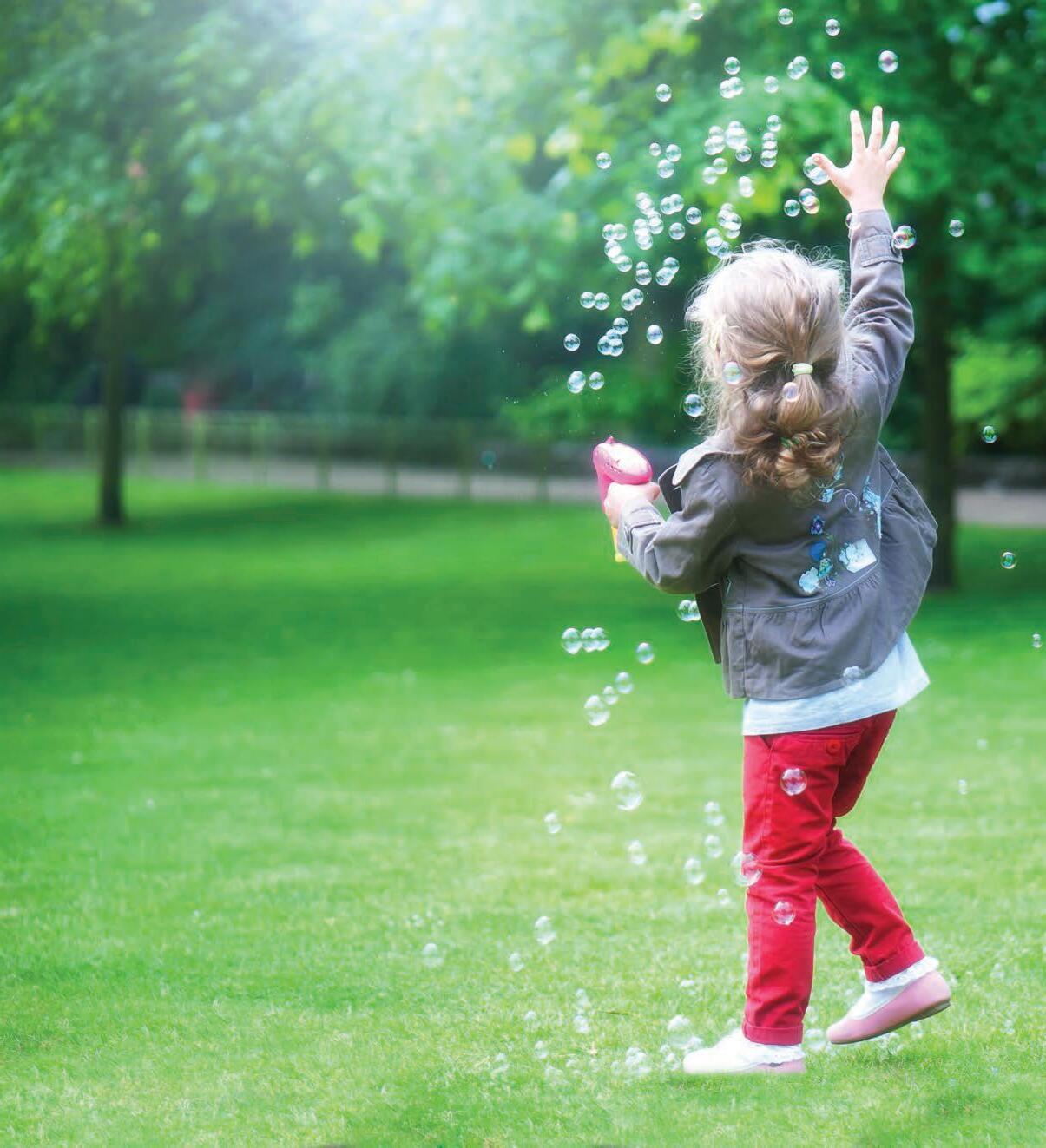

But aside from the evident physical benefits, there are also multiple social, emotional and psychological benefits from having a pet in the family.
Many studies have highlighted how owning a pet helps to reduce feelings of stress, anxiety, and depression in young people, as well as teaching important life skills including empathy, responsibility, resilience and positive relationship building.
Pets are even being used to build confidence in early readers, with many schools of thought
INTERNATIONAL DOG DAY / 26
now encouraging children to read aloud to their pets to develop confidence and competence in their reading abilities.
PET SAFETY
With pets being such an important part of our everyday lives, it makes sense that we would want to keep them safe, happy, and healthy – just like any other member of the family.
SURVIVAL is a local, family–owned business that has been pioneering the first aid industry for close to 35 years. In response to customer feedback, its recently launched Pet First Aid KIT has everything you need to keep your companion animal safe.

From conforming pet bandages for snake and spider bites to dressings, thermometer, tick removal spoon and more, this clever KIT also contains helpful everyday pet essentials such as a silicone water bowl and poop bags for easy disposal.
It’s easy to take with you on your daily dog walk or any pet adventures, with the option to swap from a waist belt attachment to a secure shoulder strap. Plus, the shoulder strap doubles as a dog lead.
The best part is the vital first aid supplies contained in this popular Pet KIT can be used to treat animals and humans alike!
8 ON THE COAST – FAMILIES
Sources: RSPCA Australia, Central Coast Council, Australian Seniors.
For first aid kits to help every member of the family visit survival.net.au
1 Reads Road, /alkiraearlylearningcentrewamberal www.alkiraelc.com.au Alkira_elc
AUGUST



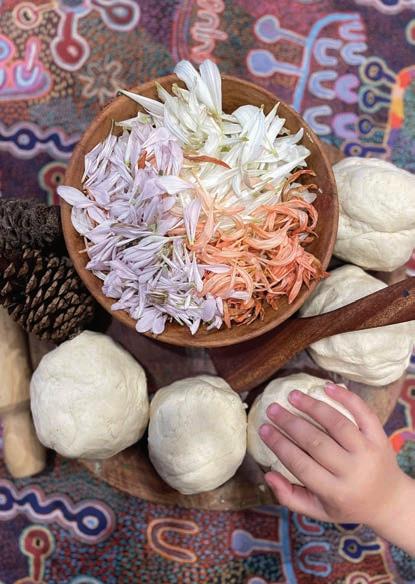
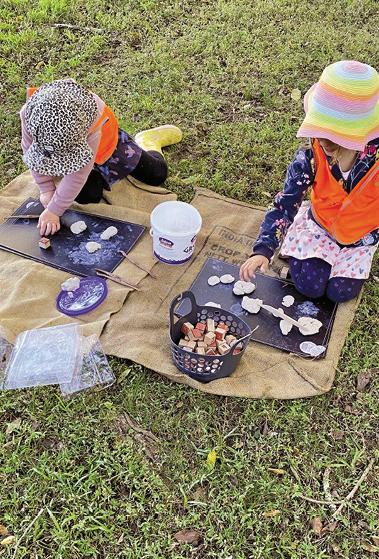
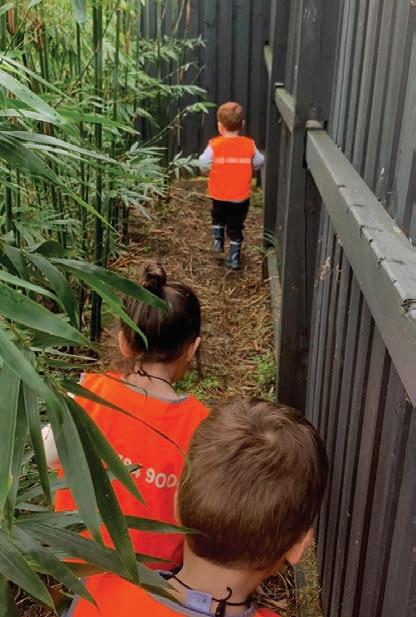
Alkira_elc /alkiraearlylearningcentrewamberal www.alkiraelc.com.au Alkira_elc /alkiraearlylearningcentrewamberal www.alkiraelc.com.au Alkira_elc 4384 9000 Road, Wamberal /alkiraearlylearningcentrewamberal www.alkiraelc.com.au Alkira_elc A community fo cuse d on happiness , education and belongin g. A place to shine Open from 6:30am to 6pm Monday to Friday Catering for Children aged 0–6 www.alkiraelc.com.au Call us on 4384 9000 to book a tour.
Mindfulness TO MUD
BY CARLY – EARLY CHILDHOOD TEACHER, ALKIRA EARLY LEARNING CENTRE
Mud glorious mud! The benefits of mud and its ability to boost children’s immunity in the early years has been highly researched and further scientific evidence supports just how important mud play is for children’s cognitive development and overall wellbeing.

Research suggests that playing with mud, even though such an enjoyable experience in itself, can also stimulate children’s immune systems and help prevent allergies and even asthma, Yes, you hear right…it’s healthy for children to get MUDDY!
The research has also found links to children’s overall wellbeing from regular exposure to Mycobacterium Vaccae (A bacteria found in dirt) which may help reduce a child’s vulnerability to depression. When you dig much deeper into the research, the bacteria responsible for this also has the ability to increase the level of serotonin in the brain, releasing endorphins and improving cognitive development and mindfulness.
There is an emerging body of research that indicates mindfulness can help children improve their ability to pay attention, to calm when they are upset and to make better decisions. In short, it helps with emotional regulation and cognitive focus (Rudell Beach Jul 23,

Leading Central Coast private practice, Cancer Rehabilitation & Lymphatic Solutions, developer of the unique OncoLaser system using MLS Laser, offer patients a premium and comprehensive allied health rehabilitation centre, providing high quality services to aid in quicker and more effective physical rehabilitation recovery from surgeries, cancer treatment, sports injuries and other conditions.
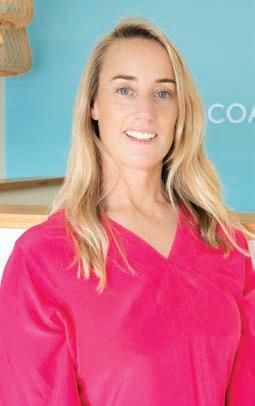

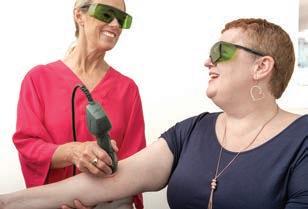
2014). The use of sensory experiences like mud and clay in early childhood services also creates calm relaxing environments and mindful moments.
Alkira ELC has embraced this research and incorporates mud play in the children’s daily activities. Mud can
10 ON THE COAST – FAMILIES ALKIRA EARLY LEARNING CENTRE
02
www.coastalrehabhub.com.au
4312 7033 / 5/30 Karalta Rd Erina NSW 2250
coastalrehabhub
KATE PERKINS Founder & leading Cancer Rehab Occupational Therapist (OT) & Lymphoedema Therapist
be used in so many ways, one of our favourite being through art. The great thing about using mud through art is it gives children ample opportunity to make mistakes and learn through experimentation whilst smashing, stirring, measuring, moulding, baking and painting and then doing it all over again! Whilst immersed in this endless sensory experimentation, children are developing their fine and gross motor skills, they are hypothesising, problem solving, using creativity and imagination whilst gaining social skills as they learn to cooperate, negotiate and communicate with their peers.
While mud play can be just a fun experience where children love getting rather dirty, it also gives them the




opportunity to be immersed in their natural environment, gain exposure to those beneficial bacteria and get away from the hi tech environment they are surrounded by. Who can say no to that!

AUG/SEPT 2023 – ISSUE 125 11
“ YOUR LOCAL INSURANCE BROKER WE'VE GOT YOU COVERED Central Coast Office Alisha Bell M: 0423 891 800 P: 02 4326 0606 E: alisha@bracesure.com.au Bracesure brokers proudly servicing Central Coast and Newcastle We are a leading Australian Insurance Broker based on the Central Coast NSW. Deal with one contact and have your own local broker for all your policies & claims. Get expert advice about your insurance needs from someone local who understands your business. Contact us today. visit us online today Central Coast Office Alisha Bell M: 0423 891 800 P: 02 4326 0606 E: alisha@bracesure.com.au bracesure.com.au Bracesure Insurance Brokers Pty Ltd ABN 39 639 365 816 is an Authorised Representative 001281218 of Insurance House Pty Ltd ABN 33 006 500 072 AFSL 240954 Local broker. Local service. All your business insurance needs in one place.
Yes, you hear right…it’s healthy for children to get MUDDY!
The power of knowing YOUR CHILD’S LEARNING STYLE
BY DR NICHOLAS ALTUNEG
As a concerned parent, you are likely to have questions about your child’s learning style. Understanding your child’s learning style can help you tailor their education to meet their needs. This article will explore the three primary learning styles: visual, auditory, and tactile. You will better understand your child’s learning style and support their educational journey.
VISUAL LEARNERS
Visual learners prefer to process information through images and other visual aids. These learners are drawn to diagrams, videos, and pictures. If your child is a visual learner, they may have an easier time understanding concepts when they are presented in a visual format.
One way to support visual learners is to provide them with plenty of opportunities to see and interact with visual aids. For example, if your child struggles to understand a concept in their math class, consider finding a video or interactive game that visually presents the concept. Additionally, it can be helpful to encourage your child to take notes in class or create diagrams and flowcharts to help them visualise information.
AUDITORY LEARNERS
Auditory learners process information best through sound and speech. These learners are more likely to ask questions and prefer being spoken to or listening to music. If your child is an auditory learner, they may benefit from listening to discussions about a topic rather than reading about it in a textbook.
To support an auditory learner, find recordings of teaching material, encourage your child to read aloud to themselves when studying, or organise recordings of themselves reading important information so they can listen to it later. Incorporating music or other sounds into their study environment can also be helpful.
TACTILE LEARNERS
Tactile learners prefer to learn through touch and physical movement. These learners are drawn to hands–on activities and experiences. If your child is a tactile learner, they may need help learning through traditional lectures and readings.
To support tactile learners, consider incorporating physical activities into their learning. For example, if your child is learning about history, you might take them to a historical site to explore and touch historical artifacts. If your child is struggling with a math concept, consider providing them with manipulatives to help them physically work through the problem. Additionally, it can be helpful to encourage your child to take frequent
breaks during studying to move their body and engage in physical activities.
IDENTIFYING YOUR CHILD’S LEARNING STYLE
So, how can you identify your child’s learning style? You can observe your child’s behaviour and preferences. Do they prefer to watch videos or read books? Do they enjoy hands–on activities, or do they prefer quiet reading? These preferences can give you clues as to your child’s learning style.
Another approach is to ask your child directly. You might ask them questions like, “What helps you understand new concepts best?” or “Do you like to work with your hands when you’re learning?” You can better understand your child’s learning style by asking about their preferences and experiences.
It’s important to note that while visual, auditory, and tactile learning styles are the primary categories, many other factors can influence how your child learns. For example, your child’s personality, interests, and background can all impact their learning style.
TAILORING YOUR CHILD’S EDUCATION
Once you better understand your child’s learning style, you can tailor their education to meet their needs. Here are some strategies you might consider:

Visual learners:
Encourage note taking and diagramming
12 ON THE COAST – FAMILIES
Provide visual aids like videos, pictures, and diagrams
Use colour co ding and other visual cues to help.
Auditory learners:
Encourage reading aloud or listening to recordings of lectures or discussions
Provide opportunities for group discussions or debates.
Use mnemonic devices or acronyms to help with memorisation.
Tactile learners:
Provide hands–on activities and manipulatives to help with learning
Encourage physical movement and breaks during studying
Use role–playing or simulation activities to help with understanding complex concepts.
It’s important to remember that while it’s helpful to tailor your child’s education to their learning style, it’s also important to expose them to different learning experiences. This can help them develop skills in different areas and become more well–rounded learners.
Additionally, it’s important to communicate with your child’s teachers and other educators about their learning styles. They may have additional insights or strategies to help your child succeed in the classroom.
In conclusion, understanding your child’s learning style can be valuable in helping them succeed in school and beyond. By identifying their preferred style of learning, you can tailor their education to meet their needs and
help them excel. Whether your child is a visual, auditory, or tactile learner, there are many strategies you can use to support their learning and help them reach their full potential.

This article is intended to promote understanding of and knowledge about general eye health topics. It should not be used as a substitute for professional advice, diagnosis, or treatment. Always seek the advice of your health care professional prior to incorporating this as part of your health regimen.
Dr Nicholas Altuneg is a Behavioural Optometrist who has been working on the Central Coast for almost 30 years. He is the co–founder at Eyes by Design, which is in the Kincumber Centre. Appointments can be made by phone 4369 8169 or online at www.eyesbydesign.com.au
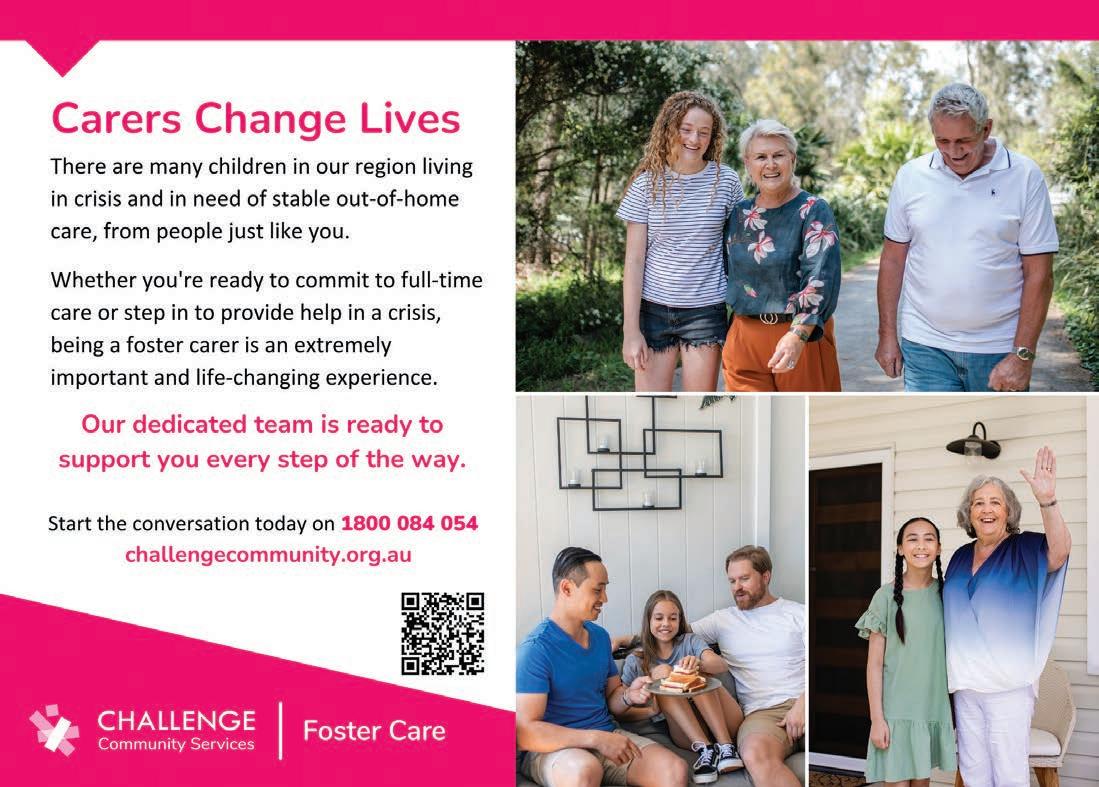
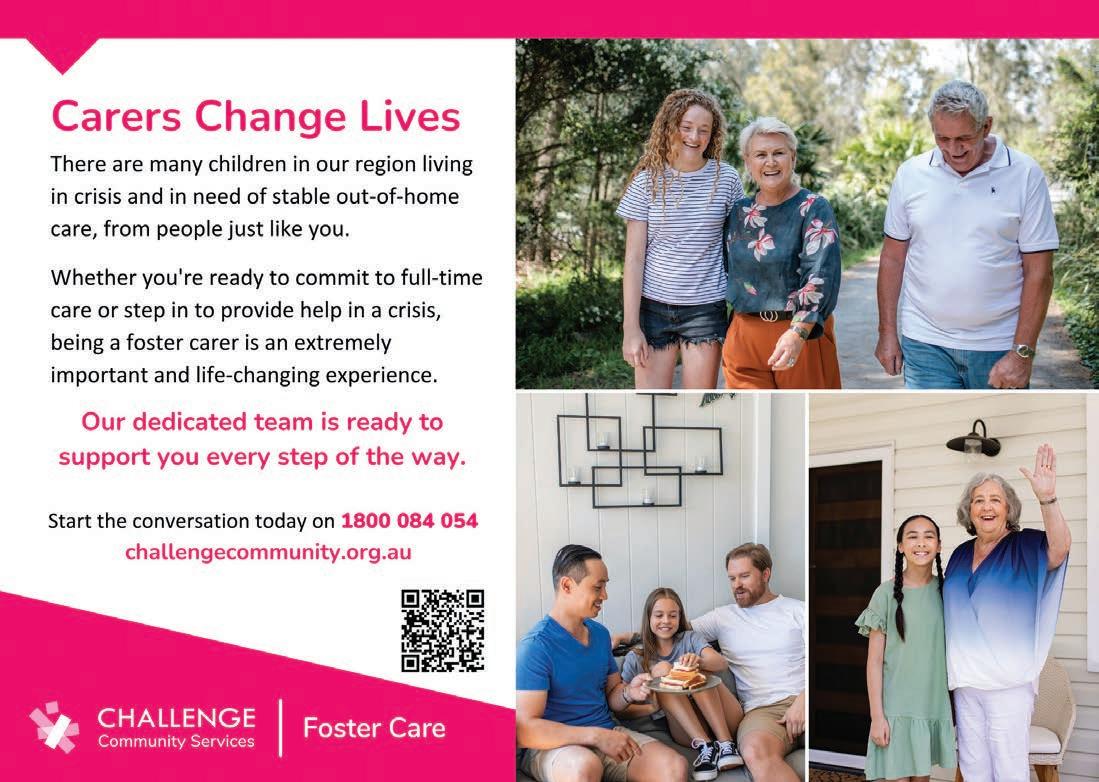
AUG/SEPT 2023 – ISSUE 125 13
“
It’s important to note that while visual, auditory, and tactile learning styles are the primary categories, many other factors can influence how your child learns
Providing support to families with an
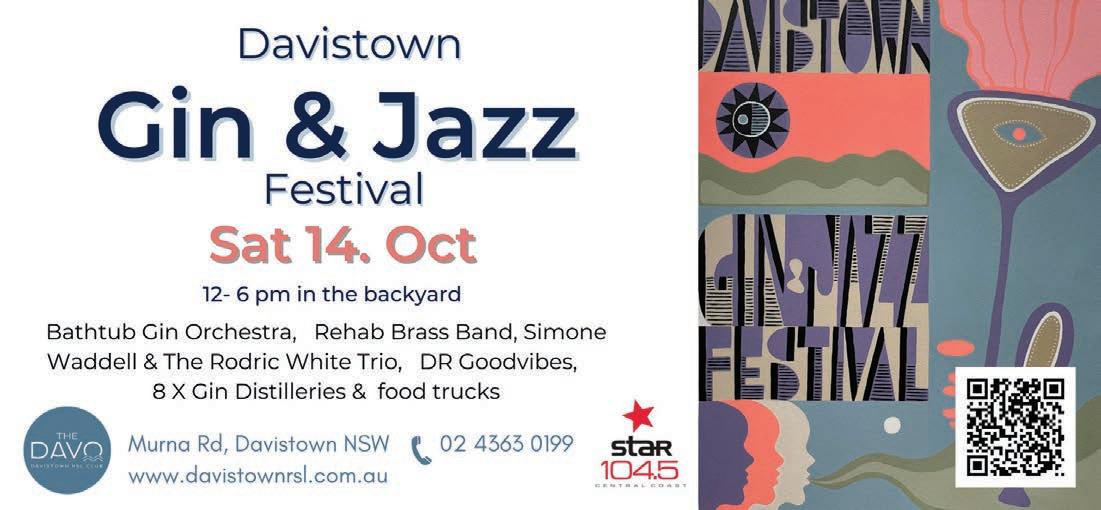
Autistic member
At Complete Sense, Autism Consulting and Counselling, the focus is providing support to families with an Autistic member. My name’s Natalie Jarvis and I have worked with Neurodiverse individuals for over a decade now. My passion is working with families to provide a range of autism specific supports from counselling to in–home sessions.

As a neuroaffirming practitioner, I don’t focus on fixing a child or a parent but rather enjoy working with individuals collaboratively to meet their specific needs. One part of my business I love, is getting to know families and finding out where my services can help, seeing the positive aspects of individuals and helping to work with their strengths and provide support. I view being Neurodivergent as a beautiful aspect of an individual’s identity and strive to work with them to help promote independence and self–confidence.
At Complete Sense, I’m a strengths based counsellor and enjoy working with parents in counselling to deal with anxiety, implement different parenting strategies providing emotional support, and dealing with the grief of a life–long diagnosis including the range
of emotions involved. I also work with children to provide emotional regulation counselling. This can help them learn to recognise the range of emotions within themselves, what their triggers are and strategies to use when they feel these emotions. I also focus on self–esteem with children and building on the strengths that they already possess.
I provide judgement–free, in–home support and consultation. This includes behaviour and visual support, social stories, discussing a diagnosis with a child to empower the child. I also provide sibling support to help provide strategies for when home may become a bit overwhelming.
My dream has been to start this practice for many years now. As a teacher in an autism specific school, I love working with students however, supporting families was always my passion and in the role of teacher there is no scope to fully provide the support to the family that is needed. I finished my studies in counselling with the sole purpose of opening Complete Sense, ensuring that I was able to spend time working with parents and their children in a range of ways, both in home and in
the office on autism specific strategies and supports.
When I am not being a counsellor or a teacher, I am a wife and a mum of two beautiful boys aged 8 and 6. I love being outside and my hobbies include swimming, playing AFL, cricket, and skiing with the family. I love to cook, especially on the BBQ however am a terrible baker. I am also an owner of a Kelpie X called Rusty and a crazy Amazon parrot called Monkey. I was born in South Africa and moved to Australia in 2011. I love our life here on the Central Coast and look forward to building my business to be able to support as many families with a Neurodivergent family member as possible.
14 ON THE COAST – FAMILIES
COMPLETE SENSE AUTISM
SPRING FAIR
P&F ASSOCIATION
Come and join the fun!
Saturday 9 September 2023
10am – 4pm

Arundel Road, Erina Heights
Pre-loved clothes, toys, books, and homewares | Kids Zone
Entertainment | Devonshire Tea, BBQ, dumplings and food trucks
Rides | Market stalls | Gin and Jazz Garden | Young Entrepreneurs
Farmers Market with fresh fruit and veg, flowers and plants
A FOCUS ON Men’s Health
BY DR GEORGIA PAGE
Father’s Day is just around the corner and is a time to celebrate the contributions and influence of fathers in our lives. It is also a time to highlight the importance of men’s health.
Men have an average life expectancy 4.5 years shorter than women and for mainly preventable causes. Let’s delve into various aspects of men’s health, to help promote a healthier and more fulfilling life for fathers and all men alike.

MEDICAL CHECK UPS
When it comes to seeking medical care, studies have shown that men tend to be less proactive than women. The awareness of the importance of men’s health has been growing, with increased efforts to encourage men to prioritise their wellbeing. Routine medical check–ups and regular visits to healthcare professionals can aid in early detection and prevention of health issues. Regular screening for conditions such as high blood pressure, cholesterol, heart health, diabetes, prostate cancer, skin cancer and mental health conditions are especially significant for men. There may be other conditions that run in the family that need to be screened for also. Discussing any concerns or symptoms with a health professional ensures prompt attention and appropriate management.
PHYSICAL WELLBEING
Taking care of one’s physical health is vital for overall wellbeing. Regular exercise plays a pivotal role in maintaining optimal health. Engaging in activities such as cardiovascular exercise and strength training, can improve heart health, and build muscle and bone strength. Exercising as a little as 10 minutes a day up to the recommended 30 – 45minutes a day, 5 days a week can help reduce your risk of heart disease and other medical conditions such as type 2 diabetes, some cancers and depression. Do whatever activity you enjoy – as long as it means moving more!
A well–balanced diet is just as important as exercise but there is so much information out there regarding healthy eating and celebrity diets it is hard to know where to start. Men should aim to incorporate nutrient–dense foods like fruits, vegetables, whole grains, lean proteins, and healthy fats into their diets. Limiting the consumption of processed foods, sugary drinks, alcohol, and excessive salt can help prevent chronic conditions like obesity, diabetes, and cardiovascular diseases. The size of our meals has grown over time and portion size is another important factor. The heart foundation recommends a ‘healthy eating plate’ is made up of ½ vegetables, ¼ carbohydrate (wholegrains) and ¼ protein.
MENTAL AND EMOTIONAL WELLBEING
Men’s mental and emotional health are often overlooked or stigmatised.
Fatherhood, with its myriad responsibilities and pressures, can sometimes take a toll on mental health. Recognizing the signs of stress, anxiety, or depression is crucial in seeking support and practicing self–care. Men take their own lives at 4 times the rate of women, with an average of 5 men a day dying from suicide in Australia.
Building and maintaining strong social connections is vital for mental wellbeing. Engaging in activities with family and friends, participating in hobbies or support groups, and seeking professional counselling when needed can contribute to better mental health outcomes. Effective stress management techniques such as mindfulness, meditation, and engaging in activities that bring joy and relaxation. Spending time with mates regularly and checking in with them is important. The key message it – it’s ok to seek help.
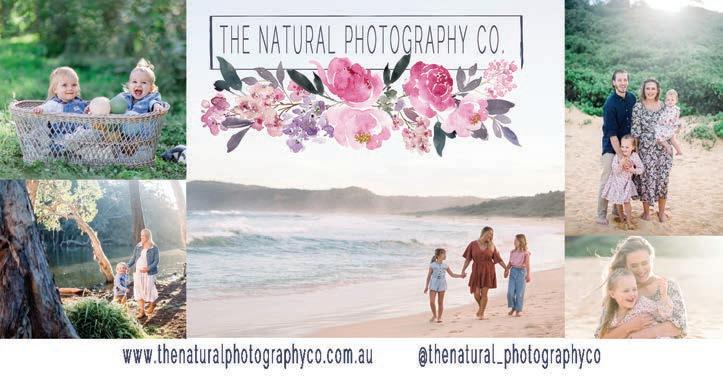
16 ON THE COAST – FAMILIES
PREVENTIVE HEALTH
Prevention is the key to maintaining long–term health and we touched earlier on the importance of regular health checks. One of the best things you can do for your health is to avoid tobacco use and limit alcohol consumption, as they increase the risk of various health issues, including lung cancer, heart disease, and liver damage.
Protecting the skin from excessive sun exposure by wearing sunscreen, protective clothing, and hats can significantly reduce the risk of skin cancer.
It is well known that women should conduct regular breast checks for early detection of breast cancer. It is equally important for men to check for testicular cancer. Although not as common as breast cancer it is the number 1 cancer amongst younger men, so it is recommended that men ‘check your nuts’ every month or so to get to know what is normal for you.
Prostate cancer is the most commonly diagnosed cancer in men in Australia. If you are aged over 50, it is recommended you talk to your doctor about PSA (prostate specific antigen) testing and if testing is right for you. It is recommended if you are aged over 45 and of African or
Autism Support Services
Complete Sense is an autism counselling and consulting service where I aim to provide your family with emotional and practical support. I believe you are the expert on your child and I work with families to provide counselling for the range of emotions involved in having an Autistic family member. I can collaborate with your family in your home to provide tailored support to help with counselling, stress management, parenting skills and autism specific support such as visual aids for communication.
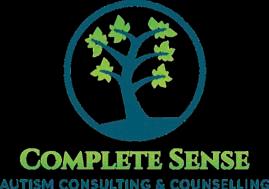
Contact 0466 127 763
nat@completesense.com.au
www.completesense.com.au
14 Bellbird Avenue, Terrigal, NSW 2260
Caribbean descent or have a family history of prostate cancer to have a chat with your doctor about PSA testing.
Let’s not forget about the significance of sexual health. Following safe sex practices and regular screening for sexually transmitted infections (STIs) is recommended. Open communication with partners about sexual health is important and if you are experiencing any issues with erectile dysfunction have a chat to your trusted health professional.
SUMMARY
On this Father’s Day, let us not only celebrate the remarkable men in our lives but also encourage them to prioritize their health and wellbeing. By adopting healthy lifestyle habits, seeking regular medical check–ups, and addressing mental and emotional wellbeing, men can enhance their quality of life and be the best fathers and role models they can be.
Happy Father’s Day!
RESOURCES www.healthymale.org.au/
Movember https://au.movember.com/mens-health/general Head to Health www.headtohealth.gov.au/
Mensline Australia (online counselling and forum for men) 1300789978 or https://mensline.org.au/
Dads in Distress (peer support for separated Dads) 1300 853437 or https://parentsbeyondbreakup.com/dids/ Heart Foundation - https://www.heartfoundation.org.au/
Dr Georgia Page enjoys all aspects of general practice and has been working at Your Family Doctors at Erina for the last 12 years. The practice has a fabulous team and they pride themselves on delivering good quality health care, with that special personal touch. For more information call 4365 4999, check the website www.yourfamilydoctors.com.au or like them on Facebook.
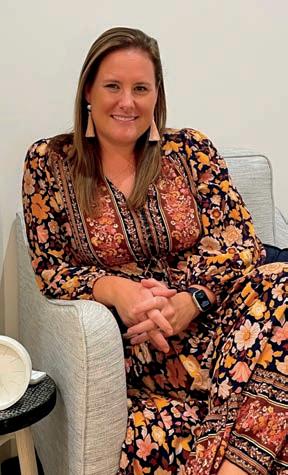
New autism support service on the Central Coast!
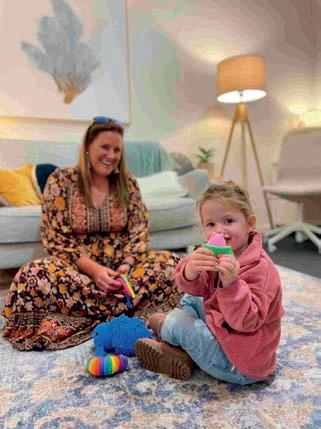
Services Offered
Counselling, Emotional regulation counselling, Autism consulting - including visual support, social stories, behavioural support, autism education, emotional support, and parenting skills, Professional development for preschools, schools or other organisations that may work with Autistic individuals, Autism specific school readiness sessions and Early Intervention groups.
Nat
AUG/SEPT 2023 – ISSUE 125 17
As the saying goes - 'you can't pour from an empty cup'. I want to help you fill your cup.
Nutrition & Eye Health
BY DR BAZ GHAFOURIAN FACT OR FICTION
As the windows to our vision, the eyes are an ironically overlooked organ when it comes to nutrition. We have all heard that eating carrots helps you see better, but what truth is there to these rumours? When it comes to nutrition and eye health, many claims on social media and in popular culture are unproven, while others are backed by solid evidence.

LET’S SEPARATE THE FACTS FROM FICTION:
FICTION: EATING CARROTS CAN RESTORE YOUR VISION
A widely held belief by many is that eating carrots improves your eyesight, especially at night. Though carrots are a healthy source of antioxidants, important for overall health, the association between carrots and eyesight originated from a myth.
During World War II, British Royal Air Force pilots first began using a new technology called radar to target and shoot down enemy planes. In order to keep this a secret, the visual accuracy of the pilots, especially at night, was attributed to eating carrots. While they can’t restore your sight, carrots still contain various nutrients essential to a healthy body and eyes. Carrots are rich source of Beta Carotene which is converted by the body to Vitamin A, an essential building block in ocular cells. A modern balanced diet will contain enough Vitamin A, so there is no need to consume excessive amounts of carrots.
FICTION: PROBIOTICS CAN CURE YOUR VISION PROBLEMS
While probiotics and fermented foods are beneficial to gut health, immunity and general health, there is no evidence that they may benefit your vision in any particular way. A diet rich in a variety of different fermented foods such as yoghurt, kimchi and miso may boost general health and thought to be more beneficial than probiotic supplements.
FICTION: COCONUT OIL CURES DRY EYES
Coconut oil has been spruiked by social media as a superfood cure–all, without much evidence to support these claims. Presently there is no evidence that consuming coconut oil is beneficial to dry eyes. In fact, coconut oil is high in Saturated fats and should only be consumed in moderation. Others have been known to rub coconut oil into their eyes. This is not recommended as anything other than sterile TGA approved eye drops can cause serious infections and unknown side effects on the body.
FACT: FISH OIL IS GOOD FOR YOUR EYES
Omega 3 fatty acids are found in fish oil, flaxseed oil, borage oil which have been extensively used to help reduce the symptoms of chronic dry eyes, in combination with eye drops and other therapies. Omega 3 works by reducing inflammation and helping stimulate tear production but must be taken regularly to be beneficial. A diet rich in oily fish or Omega 3 supplements can be used to reduce symptoms of dry eye. Recently, eye drops have become available which combine Omega 3 with lubricants for topical use. When taking Omega 3 supplements, caution should be used if combined with blood thinners or in people with bleeding disorders.
FACT: BLUEBERRIES ARE GOOD FOR MACULAR DEGENERATION
This belief probably originated from the fact that Blueberries are a rich source of antioxidants, which are proven to help in
the treatment of Age Related Macular Degeneration. Antioxidants have long been recommended to patient’s with Age Related Macular Degeneration through popular supplements knows as the AREDS2 formulation. The AREDS2 formulation contains antioxidants combined with zinc, lutein and zeaxanthin and is clinically proven to slow down the progression of Age Related Macular Degeneration in certain people.
FACT: JUNK FOOD IS HARMFUL TO YOUR EYES.
There is emerging evidence that diets high in processed foods, saturated fats, sugar and salt are harmful to eye health, such as by increasing the risk of macular degeneration, cataracts, glaucoma and dry eyes. In addition, a poor diet is a contributing factor to Type 2 Diabetes and High blood pressure, which are closely related to a host of eye problems.
In summary, common sense seems to prevail once again! There is no superfood cure for your eyes, but a balanced diet rich in green leafy vegetables, fruits, fish and good oils is the key to healthy eyes as we age.
18 ON THE COAST – FAMILIES
Optometry
4339 0900
1/15 Church St Terrigal NSW 2260
Dr Baz Ghafourian graduated from the University of New South Wales with 1st Class Honors and subsequently worked for a decade across Sydney, Parramatta and the Central Coast. Baz is the director of Adrenaline Optometry, a state–of–the–art practice in Terrigal offering cutting edge eyecare.
Adrenaline
02
admin@adrenalineoptometry.com adrenalineoptometry.com.au Shop
Any advice contained in this article is general and educational in nature. Please consult your healthcare professional for advice that relates to you.
European football giants SETTLE INTO COASTAL TRAINING BASES
Thirty two nations, one dream, one trophy – forever world champions. Sometime in the late winter evening on Sunday August 20 we will know who the winner of the FIFA Women’s World Cup Australia & New Zealand 2023™ is, but regardless of the outcome, the Central Coast will have played its part in helping two of the contending nations prepare for their shot at glory.
There was great excitement across the football community when news trickled through late last year that the Central Coast had been successful in enticing an international football side to choose the area for its team base camp.
Before the official announcement there was much speculation about the identity of the team and federation that had staked its world cup preparations on the Central Coast.
When it was finally confirmed at a press conference just who would be arriving to this part of the world in the
lead–up to the biggest women’s football tournament on the planet, the news couldn’t have been bigger.
Germany and England – the combatants in the final of the most recent Women’s European Championships had chosen to base themselves at the Central Coast Regional Sporting and Recreation Complex at Tuggerah, and Gosford’s Central Coast Stadium respectively.

It was a huge vote of confidence in the Central Coast and its sporting facilities and heralded in what has been a tremendous period of success for the sport locally.
Since the announcement that the world’s number 2 and 4 ranked sides were coming, Central Coast Stadium has hosted the Matildas twice against Thailand and Czechia, featured a record sold–out crowd at a pulsating semi–final victory for the Mariners, who went on to be crowned champions of the Men’s A–League competition, and it’s been confirmed that from next season there would a Central Coast Mariners Womens’ team flying the flag in the W–League competition.
With the tournament now underway the hard work really begins for the German and England squads.
Council’s Director Community and Recreation Services Melanie Smith said both teams will be able to train, prepare and recover in world–class facilities.
“The pitches at the Central Coast Regional Sporting and Recreation Complex and Central Coast Stadium are looking sensational, we’ve had beautiful winter sunshine, and we’re perfectly located for easy access to match–day venues.
“Our staff have worked extremely hard to prepare a high–quality pitch and all reports we’ve received during
the review process and high praise from behind the scenes has been absolutely fantastic.
“I am sure that the two teams will be very pleased with their decision to base themselves here in this beautiful part of the world, and I look forward to seeing how they perform during the tournament as well as the opportunity to show off what makes the Central Coast a very special part of the world” Ms Smith said.
Council Administrator Rik Hart said it’s heartening to see how the Coast has embraced the opportunity to support the two international teams.
“The FIFA Women’s World Cup Australia & New Zealand 2023™ is a huge sporting event that will leave a legacy for the sport in this country,” Mr Hart said.
“I was delighted to be able to officially welcome the teams to the Central Coast and it is positive to hear of the enthusiasm from the young girls in particular, who play locally and get to see a world cup in their own country.”
Germany will have exclusive access to the Central Coast Regional Sporting and Recreation Complex while the England Lionesses will be based at Central Coast Stadium from 1 July – 20 August 2023.
AUG/SEPT 2023 – ISSUE 125 19
BE SEEN BE HEARD advertise with us advertising@ onthecoastpublications.com.au CENTRAL COAST LIFESTYLE MAGAZINES families on the coast
Find out more about FIFA Women’s World Cup Australia & New Zealand 2023™ including match day information, news, and ticket sales. www.fifa.com/fifaplus/ en/tournaments/womens/ womensworldcup/ australia-new-zealand2023
Germany
To Gluten Free or not to Gluten Free? that is the question
BY CARIN CLEGG, PAEDIATRIC DIETITIAN AND FITNESS PROFESSIONAL
In clinic, I see many people who have already taken foods out of their diet without the expertise of an Accredited Practising Dietitian to educate and guide them. Consequently:
symptom management is not optimal long term
people have beliefs around foods that are not true

the diet is over–restricted and/or the wrong foods are taken out or kept in
a lot of time and energy has b een wasted on restricting the diet
there are nutrition deficiencies.
A common dietary restriction I see is gluten free. Gluten free is so well known because of the increased diagnosis of Coeliac Disease over the last few decades combined with requirement by food labelling laws to keep people informed and safe.
Regarding allergies, food labelling laws in Australia require the foods which
are more commonly known to cause severe allergic reactions in people to be declared on the food label. This includes wheat and products made with wheat such as bread and other bakery products, pasta, cous cous, flours and breakfast cereals. Other names or varieties of wheat include atta, burghal, bulgar, durum, einkorn, emmer, farina, farro, freekeh, triticale, spelt and kamut. In the case of a wheat allergy, even traces may need to be excluded if one has a severe reaction such as anaphylaxis.
Food labelling laws in Australia require foods to be labelled regarding their gluten and oat content because gluten, and sometimes uncontaminated oats (specifically the gluten–like avenin protein in oats), cause damage in the small bowel of people with Coeliac disease. A strict gluten free diet is the treatment. Gluten containing grains include wheat, barley and rye.
In Australia, a food can be labelled ‘gluten free’ if there is no detectable gluten in the food or the ingredients have not been derived from foods containing gluten or oats. Because of such sensitive testing, down to less than 3 parts per million (ppm), Australians have the strictest gluten free laws. In Europe, gluten free is 20ppm. So, people living with Coeliac Disease in these countries eat a low enough gluten level to not cause harm to health, whilst many people in Australia seemingly worry over such tiny amounts of gluten in their diet unnecessarily.
It is essential if Coeliac disease is suspected that a blood test and a small bowel biopsy be done with adequate amounts of gluten in the diet. If the biopsy shows small bowel damage a gluten free diet is recommended and repeat blood test and biopsy in 6 months later is required to diagnose or

20 ON THE COAST – FAMILIES
Prepaid funerals available Lock in the price today Document your wishes Office Locations 376 The Entrance Rd, Erina Heights 14 Mingara Dr, Tumbi Umbi 2 View Point Drive, Toukley 47 Palmdale Road, Palmdale 100% Locally Owned & Operated creightonsfuneralservice.com.au 1300 130 955 Book an appointment at one of many offices or in the comfort of your home with one of our mobile representatives. Book an appointment at one of many offices or in the comfort of your home with one of our mobile representatives. Office Locations 376 The Entrance Road, Erina Heights 14 Mingara Drive, Tumbi Umbi 2 View Point Drive, Toukley 47 Palmdale Road, Palmdale 460 Avoca Drive, Green Point 1083 Pacific Highway (CNR TELEGRAPH ROAD) Pymble Chances are you know at least one person who avoids certain foods
rule out Coeliac Disease. It is important to note that there can be other causes for small bowel damage such as but not limited to infectious enteritis (eg giardiasis) enteropathy related to drugs or acquired immune deficiency, eosinophilic enteritis, malnutrition and bacteria overgrowth.
People who are not diagnosed with Coeliac Disease or a wheat allergy but find food upsets their body are likely food intolerant. People who have a wheat intolerance are likely to react to more than 3 different food triggers, although wheat tends to be a major trigger, particularly gut symptoms. Often people with food intolerance have other symptoms such as rashes or hives, sinus problems, headaches or migraines, reflux, sleep disturbance, poor concentration, fatigue or mood changes to name a few.
Whether you have a wheat intolerance or not, it is a great idea to have a good variety of grains in your diet, for good nutritional health and to
make eating with people with food issues easier for all.
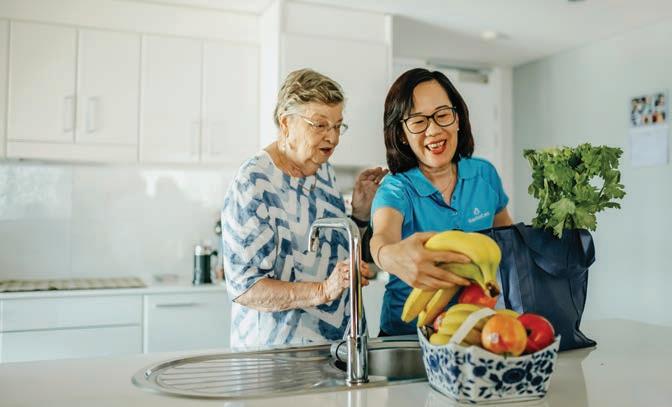
Rye and barley tend to be better tolerated if you are wheat intolerant. Rye breads are delicious and barley goes well in a soup or salad.

Oats tend to be well tolerated by people with wheat intolerance so you need not give up your porridge or muesli! You could even make porridge from polenta (cornmeal), quinoa or rice.
Other gluten free grains to include in your diet are:
rice (white brown, wild) and rice noodles: think stir fries, curries, laksas, pilaffs, fried rice, risottos, paella, soups and casseroles
corn or polenta
amaranth, buckwheat, quinoa and millet: great substitutes for rice and to put with rice or even in a salad.
So, before you make any changes to your diet, GO SEE YOUR DIETITIAN! They will:
c onduct a nutrition assessment
give dietary education on your condition, diet and testing
adv ise on appropriate dietary modification according to medical advice or evidence–based practice
assist with identifying food triggers quickly and accurately

ensure foods are not avoided unnecessarily, particularly for a long time
ensure nutritional adequacy, preventing deficiencies and chronic disease
p rovide ongoing guidance and support with dietary changes.
work with you to help you manage diet–related symptoms and conditions optimally.
Carin Clegg is the Director of Bright Diets and is a Paediatric Dietitian and Fitness Professional with an interest in environmental sustainability. Carin wants everyone to be clever about their eating to feel happy, healthy and vibrant! Contact Carin on 0407 492 278 or via www.brightdiets.com.au
AUG/SEPT 2023 – ISSUE 125 21
“
In Australia, a food can be labelled ‘gluten free’ if there is no detectable gluten in the food or the ingredients have not been derived from foods containing gluten or oats
Style Identity
no matter how you identify
BY SAM & JORDI WOODS
When a human can express, dress and present themselves in a manner that allows them to be honest and unapologetically authentic to themselves, that is when true confidence and being comfortable in one’s skin can really happen.

Yes, there are occasions and times when a dress code needs to be considered and appropriate to an occasion BUT that doesn’t mean one’s identity and style identity need to be sacrificed, changed or disregarded.


Personal style, taste and choices can be discovered from as young as 3 years old… Yes, as soon as a little human can communicate what they find appealing they will start to choose their own clothes and express what they do and don’t like. Naturally, at this age they do not know appropriate to a situation styling however, they often know if something feels nice to the touch, is in a colour they find attractive or enticing and often their taste in style can start to show through too.
No matter how you currently identify or wish to identify in the future, it is important to unlock your personal style and find your “Style Words” so you can confidently apply them to your everyday life. Discovering these words is a way to showcase who you want to be and how you want to be seen to the outside world.
Understanding styling and fashion is one thing. Having a super natural flair for making everyday people look incredible is another. Once you’ve met Sam and Jordi Woods, it’s hard not to catch their infectious passion for dressing to match your own lifestyle, personality and charisma. Through their consultancy ‘Vibrant Concepts’, Sam and Jordi have transformed the lives of thousands. Let Sam and Jordi show you how to look and feel fabulous everyday at their Style Studio in Erina – learn the art of illusion dressing, colour matching, styling, translating fashion trends and savvy shopping with their unique VC Signature Styling Systems and services that are truly personal and really work! To contact Vibrant Concepts phone 0425 221 676
BUT HOW DO YOU DO THIS?
These are our 6 tips to help start you on your “Style Identity Journey”.
List colours you like to wear or surround yourself with. For example do you enjoy colourful items, earthy tones, neutrals, monochrome combinations like Black and White OR a combination of a few or all of the listed options? If possible collect images of items in these colours and start to build a “colour collage” of your personal palette choices.
Do your research or let us help you; and discover the many different styles on offer i.e quirky, elegant, sexy, funky, minimalistic, edgy, bold, classic etc. Get familiar with them and what aligns with your soul and personality. (Often people have 3–5 “Style Words” to describe their style).
Look for/buy pieces that suit those style words i.e a classic neutral blazer is a must in a “minimalist” style however, for a “quirky” style, that would feel too simplistic, they would be better in a an orange blazer with some embellishments.
Don’t be influenced by those around you. Your style is YOUR OWN, so own it and create one that you love!
Create and photograph outfits in your wardrobe depicting the words that describe your style. Therefore, a “Classic, Simplistic, Sexy, Bold” style identity may do a pair of denim jeans (simplistic), a tailored blazer (classic) and metallic bag and kitten heel shoe (sexy) with a statement necklace and/or earrings (bold).
Acknowledge that you most likely will not “nail your style” first go and that is okay. It is a learning process and one you can experiment and have fun with at every stage of life and as your confidence builds. Also be aware that your style can evolve over time and to be honest, if you wish to stay modern and not appear outdated – it should!
We hope you have fun discovering your “Style Identity” and “Style Words” and if you do need help, we are always here with open arms, no judgement and a loving, safe space at our Style Studio.
Vibrantly yours, Sam & Jordi xx
22 ON THE COAST – FAMILIES
DISCOVER
YOUR
1
2 3 4 5 6
The beauty about discovering your true style is that it enables you to be authentically YOU on your terms!
FOREST BATHING AND ECOTHERAPY: NATURE CAN HEAL

You walk into the forest; as you look around, you notice the deep greens of the foliage on the forest floor, the velvety browns of the leaf matter accompanied by the distinctive earthy scent. You hear the rustling of the leaves as a bird alights from somewhere above you. A gentle breeze passes through and the palm leaves almost appear to be waving at you. You feel a cool water droplet fall onto your skin as you disturb a branch still laden with dew. You feel your diaphragm and shoulder muscles relax as you exhale after a heady inhaled dose of eucalyptic air.
Many people enjoy regular bush walks or spending time in their local parks but this can sometimes be a rushed and perfunctory experience to reach the end destination (which could also be a metaphor for an approach to modern life!). When we give ourselves permission to slow down and be fully present with ourselves we are able to pay attention to all of our senses – including interoception – the signals and sensation from our internal organs which are often below our conscious awareness. Through gaining increased attunement to and understanding of these senses individuals may be able to better regulate their emotional and physical states. Engaging in forest bathing and other forms of nature connection can facilitate this process.
The term ‘Shinrin–Yoku’, or ‘Forest bathing’ was coined in Japan in 1982 as a response to the corporate working culture and the need to slow down and reconnect with nature. In the fascinating way of Japanese syllabaries, the characters for the word can be broken down into descriptions; the first character is composed of three trees and means ‘Forest’, the second character is two trees and refers to the interconnectedness of the forest and the third character denotes the luxury of being fully engulfed in the abundance that surrounds you.

disconnect. Modern Western science is also generating a plethora of research pertaining to the therapeutic benefits of nature connection for physical and mental health in alignment with ancient wisdom leading doctors to ‘prescribe’ spending time in nature according to individual needs alongside other treatments and therapies they may already be engaging with.
Forest bathing is one practice which falls under the umbrella term of Ecotherapy along with animal assisted therapy, horticultural therapy, eco–art therapy, wilderness therapy and green exercise as well as more traditional talking therapy taken out of a clinic and into natural settings such as a forest, garden or beach. In essence it is ‘nature–based therapy’ and a practical application of eco–psychology in which nature becomes the ‘co–therapist’, aiming to be holistic in theory and practice to support individuals in dealing with physical and mental health challenges. More specifically Ecotherapy can be particularly supportive for individuals experiencing depression and anxiety as well as in overcoming grief, navigating life transitions, trauma and for those who wish to engage in personal development. It can take place individually or in groups. Healing and growth are fostered through interactions
with nature with mindfulness–based approaches frequently incorporated into this work. Many people recognise that they feel more grounded and calm when they have spent time in nature, particularly when it has also involved ‘giving back’ for example when planting new trees or collecting rubbish (Think ‘Take 3 for the Sea’). Nature can provide a place where people can feel safe and held. Indeed, regaining our innate connection to nature brings us back to ourselves and can lead us to discover our ‘ecological–self’.
Suggestions for increasing your daily connection to nature (even when you can’t get outside)!
C hange your PC wallpaper to a favourite photo of yourself in nature
Bring plant life into your home
Slow down your usual walks paying attention to all of your senses and the experience which follows inwardly and outwardly.
Listen to a nature themed meditation
Write a nature based haiku
Make a piece of emphemeral (temporary) nature art whilst on a walk such as a mandala from leaves in different colours.
Visit a special sit spot in nature on a regular basis and get to know it intimately through daily and seasonal changes.
Sit or lay down to spend some time cloud gazing
Words which stimulate my eco–imagination:
Indigenous cultures world wide have of course lived with embedded reverence and intrinsic connection to nature for eons and it is only now that the evolutionary mismatch in which we live has led many of us to seek ways to traverse the sense of human–nature
Petrichor: The pleasant distinctive smell in the air before the rain begins to fall Twevelet: Small leaf bundles snagged around river twigs after a flood Hopliness: Changes in colour along the length of a stem of grass
Dr Carly Walker–Smith is a mother of two. She facilitates forest bathing and offers ecotherapy to individuals and groups. She has a background as a medical doctor specialised in psychiatry and psychotherapy in London, UK and trained in ecotherapy here in Australia. She is soon to be qualified in nutritional medicine and is building a house from natural and recycled materials at Narara Ecovillage. drcarly.com.au contact@drcarly.com.au
AUG/SEPT 2023 – ISSUE 125 23
DR CARLY WALKER–SMITH
Picking your parenting battles and when to ignore
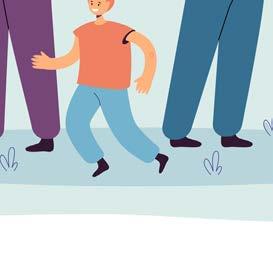
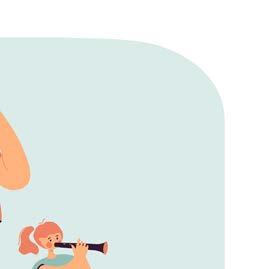
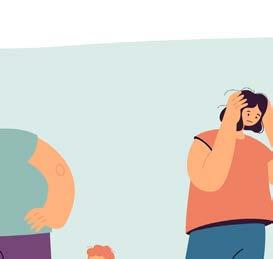
Do you find yourself in a constant parenting monologue of “don’t make that silly noise, don’t hit your brother, stop pulling faces at your sister”?
Would your time be better spent on the “please get your shoes on, please come to the table for dinner” type parenting conversations?.
My daughter, now 24, had a dreadful habit at around 3 years old, seated on a dining chair booster seat, she would start kicking her legs on the underneath of the dining room table at mealtimes. My husband would consistently ask her to stop, she would stop for a few seconds then the minute he was on his next mouthful of food she was off again kick, kick, kick. This was now a constant occurrence; she would kick, he would shout and repeat. I was in the middle of my Parent Practitioner training and learnt the strategy based on
BY LAURA HURSTFIELD

planned ignoring for minor but annoying behaviours. I realised she was getting attention for doing something we could be ignoring, she didn’t care that daddy just shouted at her, it was attention all the same. Having explained Planned Ignoring to my husband, we gave it a go and within the week the kicking stopped, and we were able to have nice family conversations and much more enjoyable mealtimes and probably used the strategy a few more times for other minor but annoying behaviours as she got older.
WHAT IS PLANNED IGNORING?
Planned Ignoring is where you completely ignore a behaviour, don’t give it attention, no words, no eye contact. Planned Ignoring is used for minor problem behaviours that are aimed at getting your attention, such as kicking
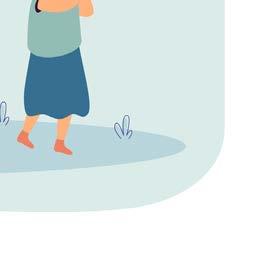
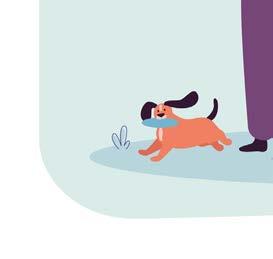
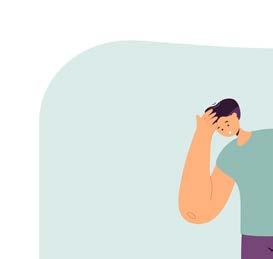
the table, making funny noises, whining, pulling faces and using rude words; all the things we react to but don’t need to.
These behaviours annoy us immensely, but they are not dangerous or aggressive to others and your child is not in danger, so what if we ignored those behaviours, don’t make eye contact, and don’t say a word? It might get louder for a short time but then when they realise you are not reacting the way they expect or want you too, they soon give up. They may try again later or the next day and if they get the same response the behaviour soon loses its appeal, resulting in reduction or cessation of the annoying behaviour.

WHAT TO IGNORE?
Parents shouldn’t ignore any behaviours which put the child or someone else in danger, and if the behaviours start to

24 ON THE COAST – FAMILIES
Foundation for life Book a tour! We’d love to meet you. 37 Bundaleer Cres, Bensville NSW p. 4368 3377 coastcs.nsw.edu.au Little Hands make magic You are unique, so are we Crystals choose you and I am the medium. Through my art let me guide you to find that perfect piece. littlehandsmakemagic.com.au @LittleHandsMakeMagic
escalate to aggression we stop ignoring and use our other strategies. For Planned Ignoring to be successful parents have to decide in advance what will be ignored and be consistent with that, so think about the most minor but annoying behaviours, whether it’s kicking the table at mealtimes, whining for lollies 10 minutes before dinner or saying rude words, decide what you as parents can ignore.
Once you have decided what you will ignore, be ready to ignore, sometimes the behaviours are so annoying it triggers us to react and that can creep up on us unexpectedly because it’s become a habit, be mindful to ignore completely, that means no eye contact, no words.
It might get worse before it gets better, this is perfectly normal the first time you try ignoring they may get louder for a while but be consistent and keep ignoring (unless they become aggressive) and eventually they realise they are not getting the attention so they will stop, this is when you praise them for stopping the behaviour. If they are super clever, they will realise you have taken back control, so expect a mutiny attempt
about 3 weeks into your new parenting strategy, be strong and stick with Planned Ignoring (or any other new strategies) and things will soon settle again, it’s very normal and some parents think they failed but in fact it proves your strategy worked and they are trying to get things back to the old way.
If your child starts climbing on you or pulling at you whilst doing Planned Ignoring for using rude words, just move away or ask them to stop climbing on you, don’t mention the rude words, we are ignoring that, but we can respond to other behaviours especially if they are getting aggressive.

Planned Ignoring is a great tool to manage minor but annoying behaviours leaving you more energy to focus on other behaviours whether it’s stopping aggressive behaviours or teaching them to clean their teeth or wash their hair. Not having to deal with these minor behaviours means you can focus on other things and hopefully make your parenting more rewarding.
WHAT WE PAY ATTENTION TO WE GET MORE OF!
If we focus on the behaviours we want we will get more of that, if we praise them for sitting nicely at the table they are more likely to continue to do it, if we praise them for putting their shoes on, even if they are on the wrong feet, they still got their shoes on, they are more likely to give it another go tomorrow. If we are constantly giving attention to the negative or unwanted behaviours, any
BABY NAMING CEREMONIES AFFORDABLE, ALL INCLUSIVE PACKAGES Appoint Godparents/Guide Parents

Include a family photography session
Show off your gorgeous new bundle of love Share your family values, hopes & dreams
Combine with a 1st Birthday or Cake Smash Beautiful alternative to Christening/Baptism
Annmaree Laverty 0412 434 759 bonjourbabynamings.com.au
attention, even shouting is fine to a 5 year old they will just keep on running with it, so turn your attention to when they are playing nicely together and not hitting each other with building blocks or throwing Lego at the cat, you will get more of the nice, wanted behaviour because you made a point of saying how wonderful it was and they love praise just watch them beam when you praise them.
Praise specifically, not just good boy or good girl, 30 seconds prior they could have been swinging the cat by its tail, they don’t know what the good behaviour was. Be specific, “you are being so good sharing your Lego with your sister”, “thank you for sitting so nicely at the table tonight”, “what a good girl for putting your dolls away”. I have also used descriptive praise when my husband cuts the grass or stacks the dishwasher like its Tetris and gets it all in one load, so then it keeps on happening!
Planned Ignoring for minor but annoying behaviours are covered in both Triple P Positive Parenting and 123 Magic & Emotion Coaching parenting programs see my website for more information
www.hurstfieldconsulting.com.au
Laura Hurstfield has 20yrs experience as a Social Worker and Parenting Practitioner. Providing Parenting Programs such as Triple P Positive Parenting Program,123 Magic and Emotion Coaching and Circle of Security. In 2013 Laura won the accolade of International Triple P Practitioner. Laura offers 1:1 and group programs. Find out more: www.hurstfieldconsulting.com.au
AUG/SEPT 2023 – ISSUE 125 25
“
Planned Ignoring is used for minor problem behaviours that are aimed at getting your attention, such as kicking the table, making funny noises, whining, pulling faces and using rude words; all the things we react to but don’t need to
WHY WE FEEL BAD
BY ALEXANDRA WILSON (AMHSW; CSW; MAASW; BSW USYD)
bodies we are in mortal danger, when we actually are not. That fear you get when giving a speech? The fear is designed to help you, but our brain is misinterpreting the threat level!
If you notice fear arising, ask yourself;
Am I in physical danger (or are others)?
If yes, protect yourself and others!
sadness ensures survival even when terrible things happen.
However, often when we experience sadness we do the opposite to what sadness wants us to do. Instead of communicating and connecting with others, we isolate and then feel even worse as a result.
But have you ever stopped to wonder WHY we experience unpleasant emotions? Believe it or not, we experience distress for very good reasons! We can’t get rid of unpleasant emotions, but we wouldn’t want to, even if we could. Unpleasant emotions are a vital part of being a human being and they are designed to help us.
The purpose of fear is protection. When we feel fear, it prompts us to protect ourselves and/or the ones we love. Without fear we would not react to genuine danger. That would be disastrous!
Fear can sometimes mislead us though. Sometimes fear will tell our
If no, remind yourself you are safe and do the scary things anyway (this reduces the feelings of fear).
Hurt is an emotion designed to tell us when we should be careful with someone or something. Imagine you feel hurt every time you spend time with a certain friend…hurt might be trying to tell you something!
Hurt says, ‘be careful here’; ‘proceed with caution’. Hurt wants us to pay attention to what is happening, and protect ourselves if needed. If you notice you are feeling hurt, ask yourself;
Is hurt trying to tell me something important here?
Do I need to b e careful with something and proceed with caution?
3. SADNESS
Sadness is a very interesting emotion. Humans have sadness as a prompt to communicate and connect. Humans are social beings – people need people. Many of our emotions are designed to ensure we stay connected, and sadness is one of these.
When we experience the loss of a relationship or something important in our life, sadness is designed to communicate to others that we need support, and then strengthen social bonds with others.
Imagine you are a prehistoric human living with your prehistoric family, and something disastrous happens where you lose your family. Sadness and grief are designed to communicate to other humans that you need support. Then those people take you in, feed you, house you, and you will then survive. If you stay alone you will die. So in this way
If you notice sadness arising, ask yourself;
Why might sadness be coming up?
(Hint: sadness often arises when we’ve lost something or things are not the way we would like them to be)
Who can I share this sadness with that can support me and offer me more connection?
4. PAIN
Pain is a similar emotion to hurt, but more extreme and with some key differences in function. Pain tells us that we MUST change something we are doing. Pain is a huge motivator for change.
Consider a situation where someone is in a toxic relationship. Pain is what motivates them to get out of it. Consider someone trying to kick an addiction. Pain is what motivates them to stop. Pain can be a very good thing!
If you notice you are in pain, ask yourself;
What is this pain telling me?
What do I need to change?
Most of us wish we could get rid of unpleasant emotions when we are in them. However, if we can LISTEN to what our emotions are saying to us, we can use them to make wise decisions which build our long–term happiness. Thanks emotions!
If you or someone you care about is struggling with distress, please reach out. We are here to help.
Mental Health Access Line (Central Coast): 1800 011 511

Lifeline: 13 11 14

Mindful Recovery Services: www.mindfulrecovery.com.au or (02) 4660 0100
Alexandra (Alex) Wilson holds a Bachelor of Social Work from the University of Sydney (2003) and is the owner of Mindful Recovery Services. Mindful Recovery Services is a private practice providing psychological treatment and support for adolescents and adults. Alex is passionate about dispelling myths about mental illness and is highly skilled in dialectical behavioural therapy. She is an experienced public speaker and provides consultation to other professionals on managing difficult behaviours in teens. Alex lives on the NSW Central Coast with her partner, 2 young boys, and a cheeky puppy named Axel.
26 ON THE COAST – FAMILIES
Unpleasant emotions are, well…unpleasant! Fear, sadness, hurt, pain, shame, loneliness etc can all feel horrible and trigger strong urges to try to get away from these feelings.
1. FEAR
2. HURT
IDENTIFY, REMOVE & PREVENT MOULD
IN YOUR HOME
BY AMY STITT
he Central Coast boasts stunning beaches and landscapes where you can enjoy a relaxed lifestyle. However, like many coastal areas, it is susceptible to a common nuisance that can plague our homes: mould. The presence of this insidious substance can be a real challenge, but with some practical recommendations and lifestyle tips I hope to reduce the risk of microbial growth within the homes on the central coast. My name is Amy Stitt and I have personally overcome mould illness and honed my expertise in managing allergies. My journey led me to become a certified Mould Testing Technician and a Building Biology student.
One of the primary demographics that seeks my assistance consists of concerned parents whose children exhibit mould–related health symptoms or have received a mould–related diagnosis. Recognising the importance of addressing this issue, I am here to offer you a few practical tips on how to identify, remove, and prevent mould in your home, ensuring healthier and safer environment for your family.
To begin, it is important to understand that mould thrives in environments that contain sources of moisture and a food source. Simple factors such as condensation on your windows and the accumulation of dirt and dust within your home can create ideal conditions for mould growth. Now, let’s delve into three tips that will help you identify the presence of mould:
Damp/musty odour
The odour arises from the release of microbial volatile organic compounds (MVOCs) into the indoor environment. It serves as an unmistakable indicator of a mould problem within your home.
Visible mould
If you notice visible patches of mould, it’s highly likely that there is a more extensive infestation within your indoor environment.
Cracked or peeling paint
Often, cracked or peeling paint can signify underlying moisture issues and potentially hidden mould growth. By paying attention to these signs, you can catch the problem early on and take appropriate action.
Now that we’ve discussed how to identify mould, let’s explore three effective methods for removing it:
Personal Protective Equipment (PPE)
Before embarking on any mould removal endeavour, it is essential to prioritise your safety. Always wear appropriate PPE, such as gloves, goggles, and at a minimum an N95 mask, to protect yourself from mould spores.
DIY approach
If the visible mould covers an area smaller than an A4 sheet of paper, you can attempt to remove it yourself with a basic warm soapy water solution using basic detergent, use a microfibre cloth to clean and dry tea towel to completely dry the area. However, for larger areas, it is advisable to seek the expertise of an IICRC Mould Remediator as they have specialty training to safely and effectively remove mould.
Natural cleaning solutions
I recommend avoiding “mould killer”
products, which may contain harsh chemicals, and try a warm soapy water mixture instead.
Finally, let’s explore three preventive measures that will assist you in minimizing the recurrence of mould in your home:
Ventilation
Adequate airflow is essential for preventing mould growth. As humans, we generate several litres of water vapour daily through activities like showering and cooking. To prevent moisture build up, ensure proper ventilation by allowing this moisture to escape your home within 24–48 hours.
Exhaust fans
Use them! Maximize the use of exhaust fans during cooking and showering, and continue to run them for at least 10 minutes afterward. This practice aids in expelling excess moisture, reducing the chances of mould growth.

Decluttering
A cluttered home not only restricts air flow, but also promotes the accumulation of dust and dirt. When combined with high relative humidity, a cluttered home becomes a conducive environment for mould. By decluttering, you further reduce the chance of microbial growth.
For further information or to discuss having a moisture and mould assessment of your home, please go to: www.beachesbuildingbiology.com
After a 3–year battle with health symptoms ranging from itchy eyes and skin rashes to light sensitivity and fatigue, Amy Stitt discovered the culprit, hidden mould in her cute coastal apartment. Within a week she ended up in hospital with no choice but to pack up her young family and move to a house with better ventilation that was carpet free so she could begin to rebuild her immune system. With the help of integrated practitioners to assist with a body detox, she also had to sort through all of her belongings which included a gruelling cleaning process and discarding many contaminated items. Amy has turned her struggle into a career where she can help others create a healthy indoor environment for them to thrive in.
AUG/SEPT 2023 – ISSUE 125 27
T1 2 3 1 2 3 1 2 3
BY ZOE PAPADATOS, ACUPUNCTURIST AND CHINESE HERBALIST


Perimenopause, often referred to as the “transition to menopause”, is a natural and inevitable stage in a woman’s life, during which as woman’s body undergoes hormonal changes in preparation for the cessation of menstruation.
Instead of viewing it solely as a time of challenges and discomfort, perimenopause can be reframed as a powerful rite of passage, a transformative journey that offers women an opportunity for self–discovery, growth, and empowerment.

Physiological changes of Perimenopause:
The main hormonal shift during this phase involves a decline in oestrogen levels. Oestrogen is the primary female sex hormone responsible for regulating the menstrual cycle, maintaining
leading to fluctuations in hormone levels. This hormonal instability can result in a range of symptoms and physical changes such as irregular menstruation, hot flushes, night sweats, mood changes (including anxiety and depression), changes in libido and sexual health, sleep disturbances and changes in bone and cardiovascular health. Additionally, the levels of other hormones, such as progesterone and testosterone, may also fluctuate during perimenopause, albeit to a lesser extent.
Perimenopause as a rite of passage: Although perimenopause is seen as a stage of physiological changes on a woman’s life, this time is also powerful rite of passage for a woman. Just like adolescence marks
the transition from childhood to adulthood, perimenopause marks the transition for reproductive years to the next phase of a woman’s life. It is a time of profound change, both physically and emotionally. By embracing this change as a natural part of life’s journey, women can cultivate a sense of acceptance and curiosity about what lies ahead.

Perimenopause invites women to explore their sense of self and reflect on their experiences, values, and priorities. It provides an opportunity for self–discovery, as women may reassess their roles, relationships, and aspirations. By taking time for self–reflection, women can gain a deeper understanding of themselves and make intentional choices that align with their authentic selves.
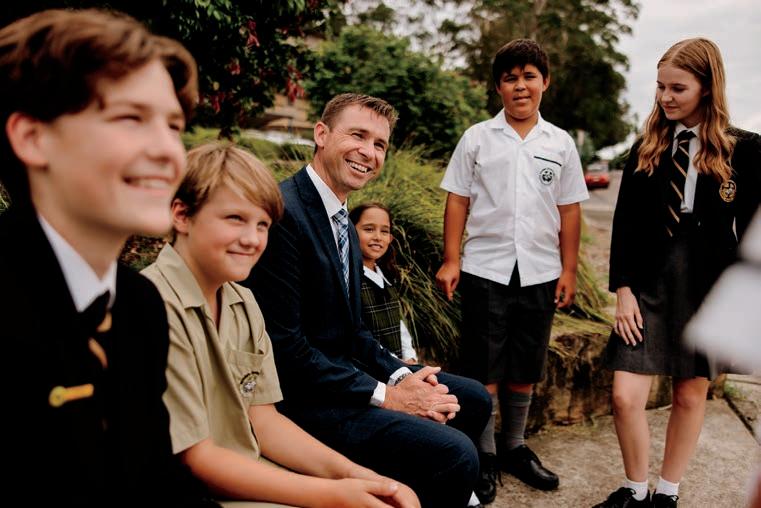
28 ON THE COAST – FAMILIES
PERIMENOPAUSE AS
OF PASSAGE:
A RITE
Embracing change and
empowering
St Philip's Christian College Gosford Register your interest today Or Contact Us on: 4331 4400 or Gosford.Registrar@spcc.nsw.edu.au Open Days 2023
women
Perimenopause also offers an empowering invitation for women to prioritize their own wellbeing. As the body undergoes hormonal changes, it becomes essential to listen to its needs and practice self–care. Self–care practices can play a vital role in managing the symptoms and promoting overall wellbeing during perimenopause. Here are some self–care strategies that can help:
Prioritis e healthy lifestyle habits: Maintain a balanced diet rich in fruits, vegetables, whole grains, and lean proteins. Stay hydrated and limit your intake of caffeine, alcohol, and spicy foods, as they may trigger hot flashes. Regular physical activity, such as aerobic exercises, strength training, or yoga, can help alleviate symptoms and support bone health. Avoid smoking and minimise stress through relaxation techniques, deep breathing exercises, or mindfulness practices.
Manage stress: Perimenopause can be a time of increased stress due to hormonal changes and life transitions. Engaging in stress management techniques can help reduce its impact. Explore activities that promote relaxation and wellbeing, such as meditation, deep breathing exercises, yoga, or spending time in nature. Prioritise self–care activities that bring you joy and help you unwind.
G et adequate sleep: Aim for a regular sleep routine and create a sleep–friendly environment. Establish a calming bedtime routine, such as reading, taking a warm bath, or practicing relaxation techniques
before sleep. Ensure your bedroom is cool, dark, and comfortable. Limit exposure to electronic devices before bedtime, as they can interfere with sleep quality.
S eek support: Connect with friends, family, or support groups who understand and empathise with your experiences. Sharing your feelings, concerns, and experiences with others going through similar transitions can provide comfort and validation. Consider joining online communities or local support groups focused on women’s health and perimenopause.
Practice mindful awareness: Pay attention to your body’s signals and needs. Listen to your body and give yourself permission to rest when you need it. Take breaks throughout the day, engage in activities that bring you joy, and honour your personal boundaries. Prioritise self–care and self–compassion.

Explore complementary therapies: Some women find relief from perimenopausal symptoms through complementary therapies such as acupuncture, herbal remedies, or relaxation techniques like massage or aromatherapy.
Stay informed: Educate yourself about perimenopause and its associated symptoms. Understanding the changes happening in your body can help alleviate anxiety and empower you to make informed decisions about your health. Stay informed through reputable sources, books, websites, and discussions with healthcare providers. Perimenopause is not just a collection of symptoms or a phase to ensure. It is a profound and transformative journey that invites women to embrace change, discover their true selves, and advocate for their wellbeing. By shifting the narrative surrounding perimenopause and viewing it as a rite of passage, women can embark on this journey with strength, resilience, and a sense of empowerment, embracing the next chapter of their lives with grace and self–compassion.
“
Perimenopause also offers an empowering invitation for women to prioritize their own wellbeing
Find out more at www.coastalwellness.com.au or on social media @coastalwellness_ 0490 367 470 | 9 Brougham St East Gosford, NSW 2250
Zoe Papadatos is the founder and leading acupuncturist of Coastal Wellness Cottage. Coastal Wellness is a safe and nurturing space where women can access a range of services to support them through all stages of their lives.
The power within
WHY AND HOW WOMEN OF ALL AGES SHOULD PRIORITISE PELVIC FLOOR EXERCISES
BY LOUISE HURLEY
For many women, the pelvic floor is an often overlooked and underappreciated part of the body. However, understanding its importance and incorporating pelvic floor exercises into our routines can have significant benefits for continence, core strength, and sexual function. In this article, we’ll explore the reasons why women of all ages (even those who have not had children) should prioritise pelvic floor exercises and provide practical advice on how to do them correctly.
So, what does the pelvic floor actually do?
The pelvic floor is a group of muscles, ligaments, and tissues that form a supportive hammock–like structure in the basin, or the “floor” of the pelvis. Both females and males have pelvic floor muscles, but usually it’s women we talk about most due to the changes these muscles go through during pregnancy and childbirth. The pelvic floor’s primary functions include maintaining continence, supporting the pelvic organs, contributing to core strength and sexual function. Despite its crucial role, the pelvic floor often weakens over time due to factors such as pregnancy, childbirth, hormonal changes and ageing.
Seek
professional guidance
Surprisingly, approximately 30% of women mistakenly push down on their pelvic floor muscles instead of lifting and squeezing them. This incorrect technique puts unnecessary strain on weakened muscles, exacerbating symptoms.
Working with a women’s health physiotherapist ensures that you learn to engage your pelvic floor correctly, avoiding further complications. They will coach you through proper techniques to ensure you are squeezing and lifting, not pushing down.
If you experience symptoms such as incontinence, heaviness down through
your pelvis, back pain or pain during intercourse, it is essential to consult a women’s health physiotherapist. Not all women will benefit from generic Kegel exercises, and overuse of these muscles can potentially worsen symptoms, especially if you have tight pelvic floor muscles. A women’s health physiotherapist can assess your pelvic floor function, tone and endurance and provide personalised guidance and recommendations for pelvic floor exercises.
Beyond Postpartum: Pelvic floor exercises are for all women

Contrary to popular belief, pelvic floor exercises are not exclusive to postpartum women. As women approach menopause, hormonal changes result in decreased muscle strength, including the pelvic floor muscles. Engaging in regular pelvic floor exercises can help mitigate the effects of ageing and maintain optimal pelvic floor function throughout life.
EFFECTIVE PELVIC FLOOR EXERCISES
How to engage your pelvic floor muscles
A correct pelvic floor activation involves an internal squeeze and lift of the muscles without the use of other muscle groups, such as the glutes (bum cheeks), hip flexors, and abdominal muscles. These should all remain relaxed during pelvic floor exercises. Imagine that you are trying to gently squeeze and lift both your front and back passage at the same time, without clenching your bum cheeks. The focus should be solely on the internal muscles.
Taking care of your pelvic floor health should be a priority for all women who want to remain active, confident and independent as they age. By understanding the pelvic floor’s significance and incorporating the correct exercises into your routine, you can reap the benefits of improved continence, enhanced core strength, and better sexual function. Remember to consult a women’s health physiotherapist if you experience any symptoms or have concerns.
While Kegel exercises are usually the first thing we think about when we hear of pelvic floor exercises, there are other effective ways to improve pelvic floor function beyond these traditional squeezes:
1. Functional exercises: Perform pelvic floor activation while engaging in functional movements like at the bottom of a squat position (try exhaling as you do this), lunges, or bridge raises. This integration challenges the pelvic floor to work in coordination with other muscle groups, enhancing overall strength and stability.
2. Pre–workout activation: Include pelvic floor exercises as part of your warm–up routine at the gym or fitness class. This primes the pelvic floor muscles and prepares them for the upcoming physical activity.
3. Walking on uneven surfaces: Walking on surfaces such as the beach or bush trails can help strengthen the pelvic floor. The varying terrain adds an extra challenge, engaging the pelvic floor muscles in a dynamic way.
4. Strengthen supporting muscles: Strengthening other muscle groups that support the pelvic floor, such as the glutes, hamstrings, deep core muscles, obliques, and hip flexors, can indirectly improve pelvic floor function.
Louise Hurley As a MumSafe™ trainer and Pregnancy and Postnatal Corrective Exercise Specialist, Louise’s mission is to help mums at every stage of motherhood safely start or return to exercise. Louise is the owner of Strong Mums and runs small group training and 1:1 PT. Find out more at www.strongmums.com or on social media @strongmumsgosford
30 ON THE COAST – FAMILIES

